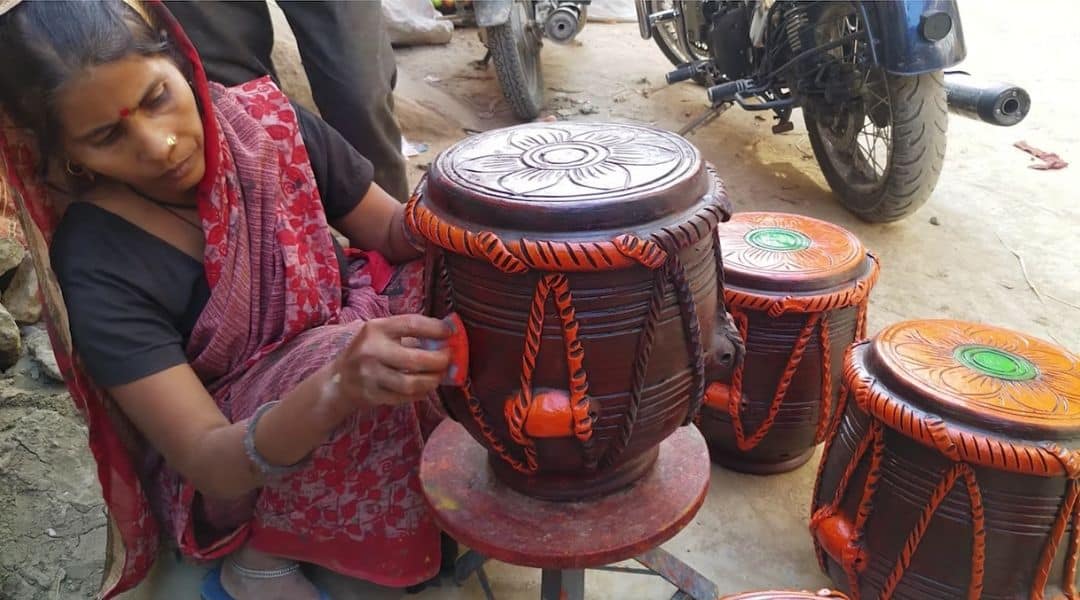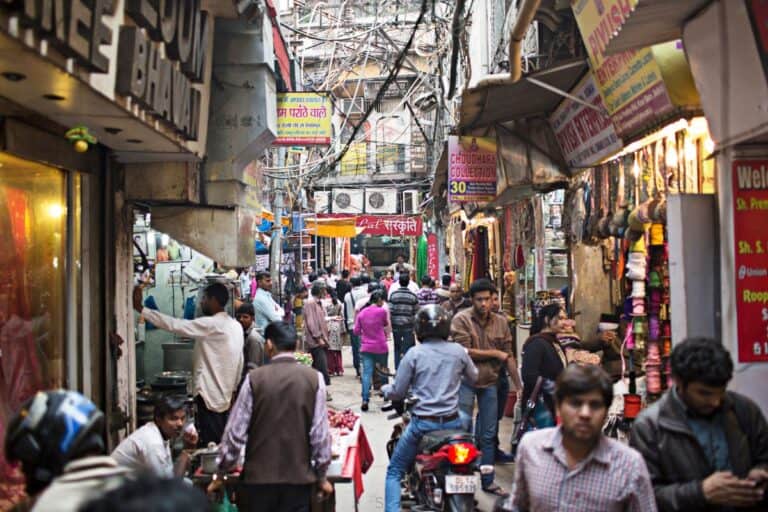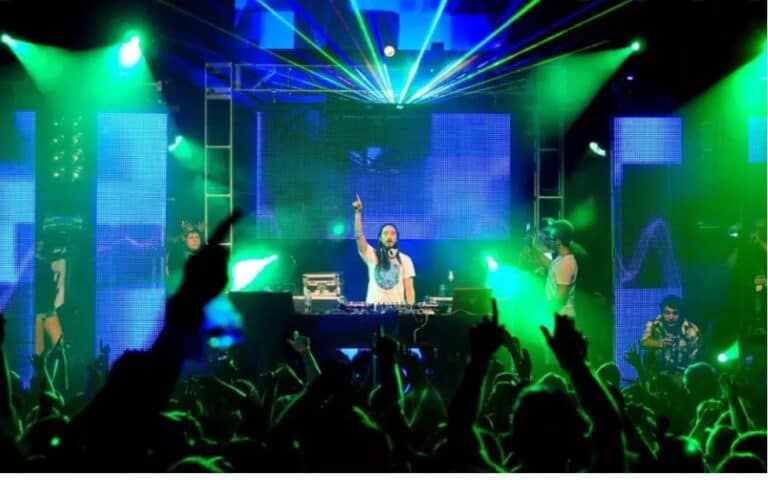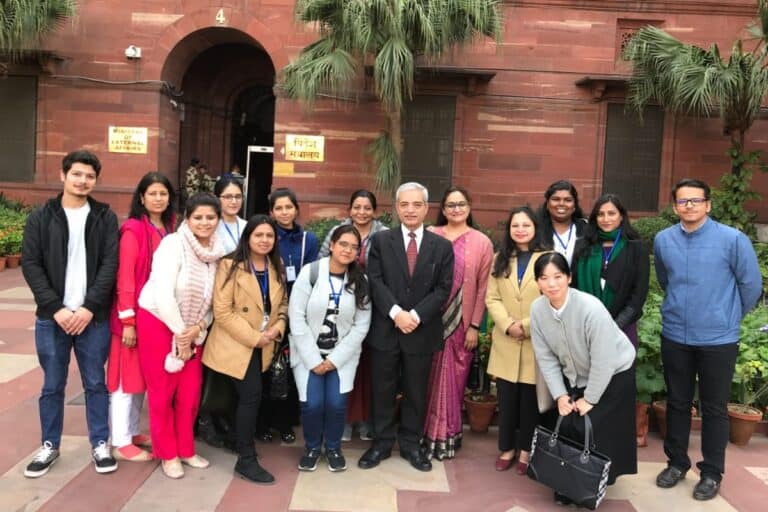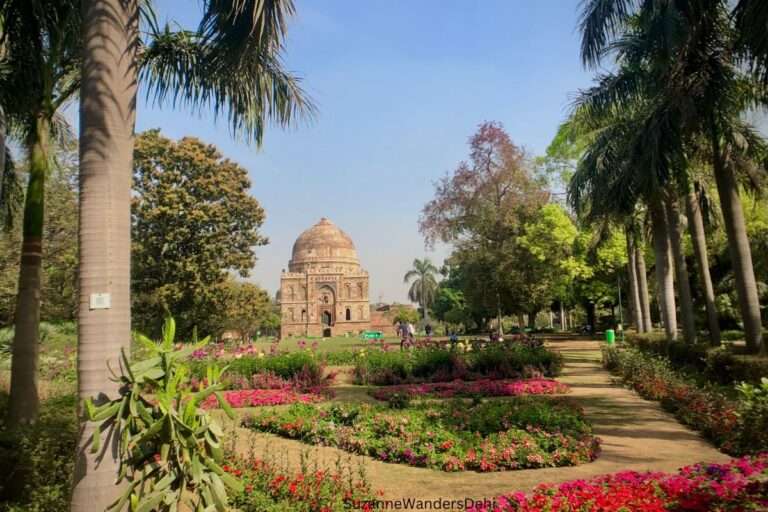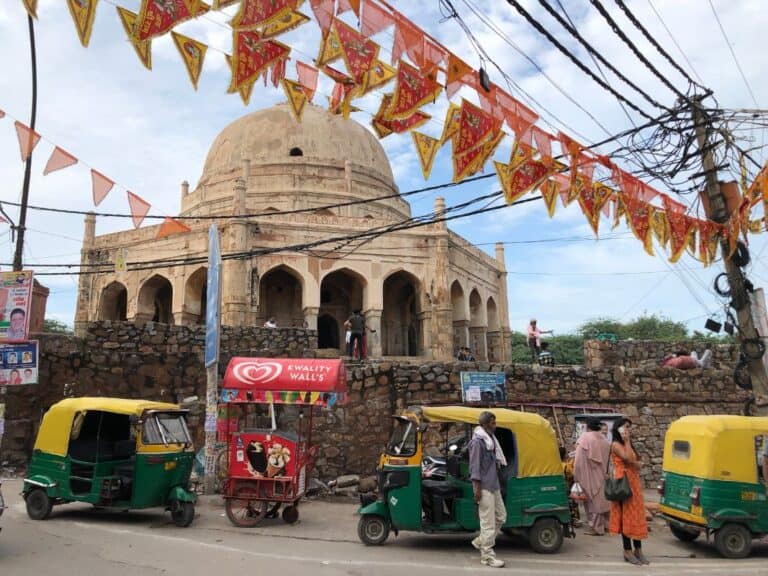35 Best Off the Beaten Path Sites in Delhi (2025)

This is where to go to get into the heart and soul of Delhi, where most tourists do not venture. You will get way off the beaten path with this list of 35 sites to see in Delhi. I live in Delhi and have explored all of these hidden gems.
Of course some of these places have become a bit known and you won’t be the only visitor, but generally speaking these are not on a typical itinerary, although they deserve to be. The list is quite eclectic, like Delhi, so don’t feel you have to knock each and every one off. Just choose the ones that most appeal to you and have fun exploring.
If it’s your first trip to Delhi, read my complete guide and suggested itineraries for first time visitors.
Short on time? Here are my top 3 picks:
Hazrat Nizamuddin Dargah – fascinating mausoleum of a powerful Sufi saint, revered and visited by all faiths
Lodhi Art District – quiet neighbourhood built by the British Raj with over 50 large art murals
Feroz Shah Kotla Fort – ruins of a fort built in 1354, widely believed to be inhabited by djinns
35 Best Off the Beaten Path Sites in Delhi
Delhi can be very hot. Always bring water, sunscreen and a hat. As a woman I always carry a scarf or dupatta with me in case I end up going into a mosque or Sikh temple. If you are visiting Delhi in winter, wear a warm sweater or a light winter coat.
1. Ghazipur Phool Mandi (Flower Market)
This is India’s largest wholesale flower market and it’s a dream for photographers. The swaths of blooms are everywhere and make for stunning pictures. India uses a lot of fresh flowers and 50,000 kg of them are sold at Ghazipur every day.

This is where event planners, retailers and florists come to get their fresh blooms. Don’t be surprised if you’re the only visitor here – this is one of the most off the beaten path sites in Delhi! You will find flowers from India, South Africa, Holland, New Zealand and Thailand here.
The action starts early at 4:00 am, and the market is practically shut down by noon. If you want to see the place in full swing and get some great deals on flowers, go by 5:00 am.
Keep in mind this is a wholesale market. Most vendors do not want to sell less than 1/2 kg of flowers. Prices are higher during festival and wedding season, September to February. The market floor can be wet, so wear appropriate foot wear.
👍 Insider Tip: Never accept the first price offered by the vendors and bargain. The best prices are found deep in the market, as the stands on the periphery are always more expensive.
- Hours & Cost: 3:00 am – 12:00 pm, daily; free
- Nearest metro station: Kaushambi (Blue line), exit Gate 4
- What to see nearby: Swaminarayan Akshardham
- Where to eat: RBG Bar & Grill (at the Park Inn by Radisson)
2. Sunder Nursery
Sunder Nursery, sometimes called Delhi’s Central Park, is Delhi’s newest heritage park. It is fast becoming popular among city residents, competing with Delhi’s favourite park Lodhi Garden. Once an unkempt, neglected space, the 90 acre site has been restored over the last 10 years by the Aga Khan Trust.
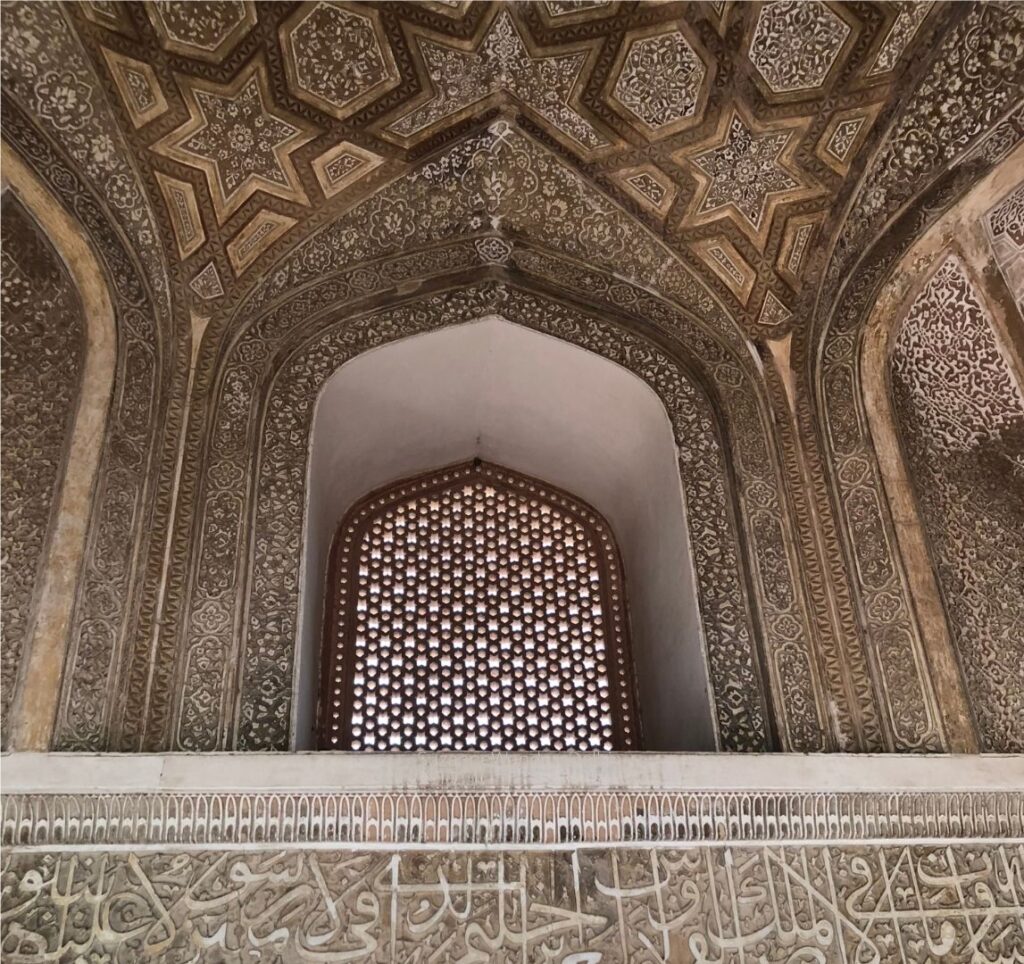
It has won UNESCO awards for heritage conservation and sustainable development. Over 80 species of birds and 40 species of butterflies have been sighted.
The park was formed on the site of a 16th century Mughal garden called Azim Bagh. It contains beautifully restored monuments from that time.
Walk on the Grand Trunk Road
The central vista walkway is located on the 16th century trade route, the Grand Trunk Road. You can literally walk down the path of history, past lotus shaped marble fountains and Persian styled flower beds.
During the Raj the British used the space as an experimental nursery. Today parts of the park are still used as a nursery for the city’s public works department.
The park is recognized as an ecological and cultural hub. It has a become a favourite spot for family picnics; they have a wonderful, interactive children’s play zone, and swings hang from tree branches throughout the park. The park hosts many educational programs on topics such as bee conservation and nest building as well as cultural events.
You can see the updated schedule of events on the Sunder Nursery website.
Organic Bazaar
Every Sunday morning (Saturday too in the winter), the park hosts an organic farmers bazaar from 7:30 am to 12:00 pm. You’ll find all sorts of fresh produce, breads, jams and preserves, coffees and other organic items.
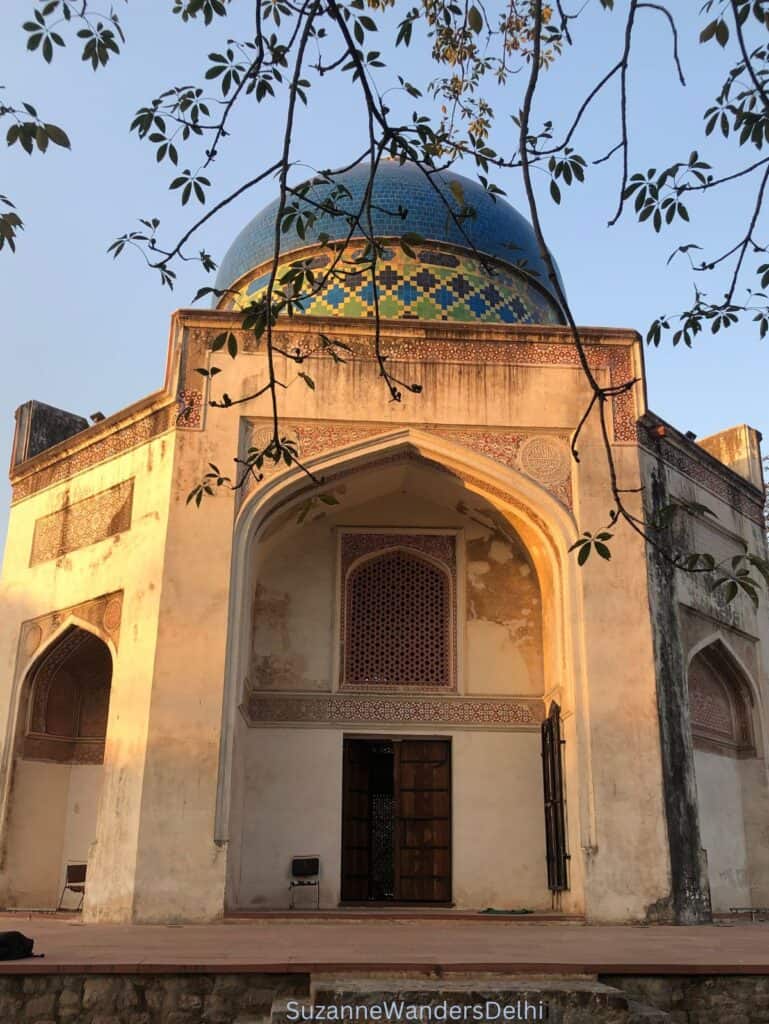
- Hours & Cost: 7:00 am – 10:00 pm (April to September) & 7:00 am – 6:00 pm (October to March), daily; INR 200 foreigners, children under 5 free.
- Nearest metro station: Jawaharlal Nehru Stadium aka JLN Stadium (Violet line), exit Gate 2 or 3
- What to see nearby: Humayun’s Tomb, National Zoological Park, Sabz Burj
- Where to eat: Carnatic Cafe (in Sunder Nursery)
3. Hazrat Nizamuddin Dargah
Hazrat Nizamuddin Dargah is the mausoleum of the powerful Sufi saint Khawaja Nizamuddin Auliya. This is a very historic and revered sight where you can still feel the spiritual mysticism and energy.
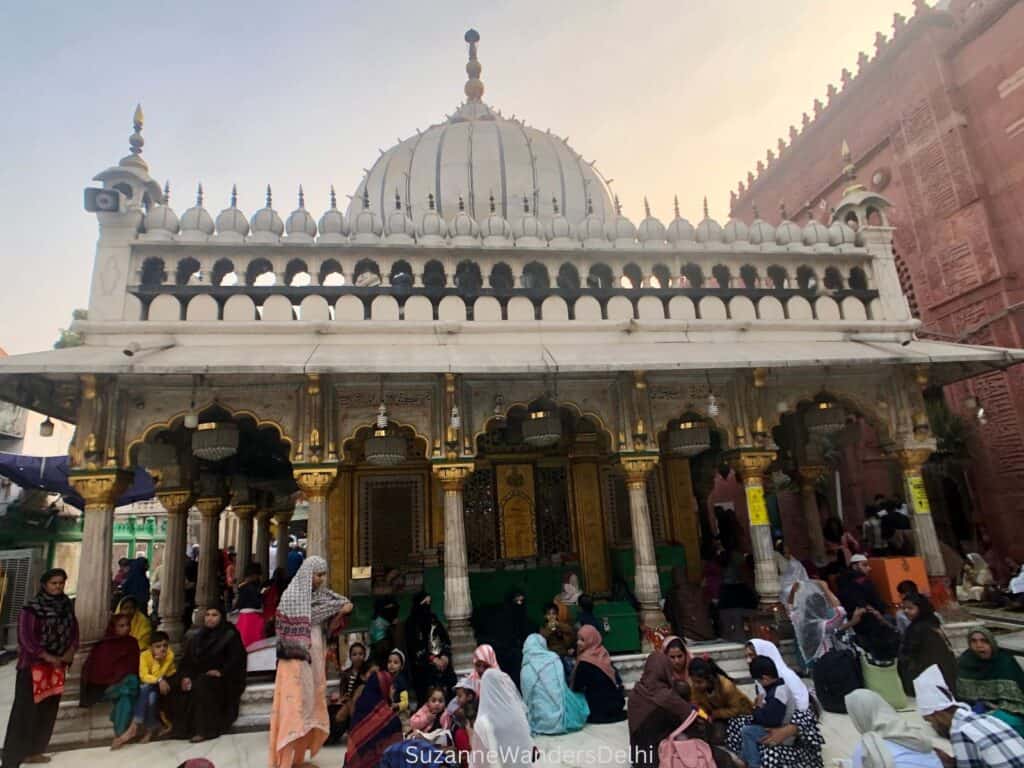
Personally, I think this is one of the most fascinating off the beaten path sites in Delhi. I love taking people here – it’s a real glimpse in mysticism and spirituality in the city.
The dargah is believed to hold great power and thousands of devotees visit every week. It is said any wish made from the heart will be granted, regardless of religion.
The tomb was built in 1325 by the ruler Muhammad Bin Tughlaq who was a devotee of the saint. It is the main mausoleum in a complex which contains the tombs of Princess Jahan Ara Begum (the daughter of Shah Jahan) and the poet Amir Khusro. The graves of over 70 mystics, singers and followers of the Sufi saint who wished to be buried close to him are also there.
Even though this is a Muslim site, people of all faiths come to pray and pay respect to the famous Sufi saint. Hazrat Nizamuddin wanted to destroy India’s caste system and preached tolerance. He forbade his followers from asking the religion of any person seeking help.
How to Visit the Dargah
To reach the dargah you will need to walk through the lanes of a busy market. The vendors can be aggressive about removing your shoes, but shoes do not need to come off until you reach the entrance. As a woman who often comes here solo, I recommend dressing very modestly and covering your head before entering the market.
Men must also cover their heads before entering the complex and can use the same kind of scarf used at a Sikh temple.
To help blend in (and hopefully deflect attention), it’s a good idea to buy rose petals or some other kind of offering from one of the vendors close to the shrine (dargah). This vendor can store your shoes, you will see they all have shoe racks for this purpose.
Do not wear good shoes just in case there is a mishap. If you decide to carry your shoes with you, either put them in a bag or carry them so that the soles face each other. The soles of shoes should never face the holy ground of the dargah.
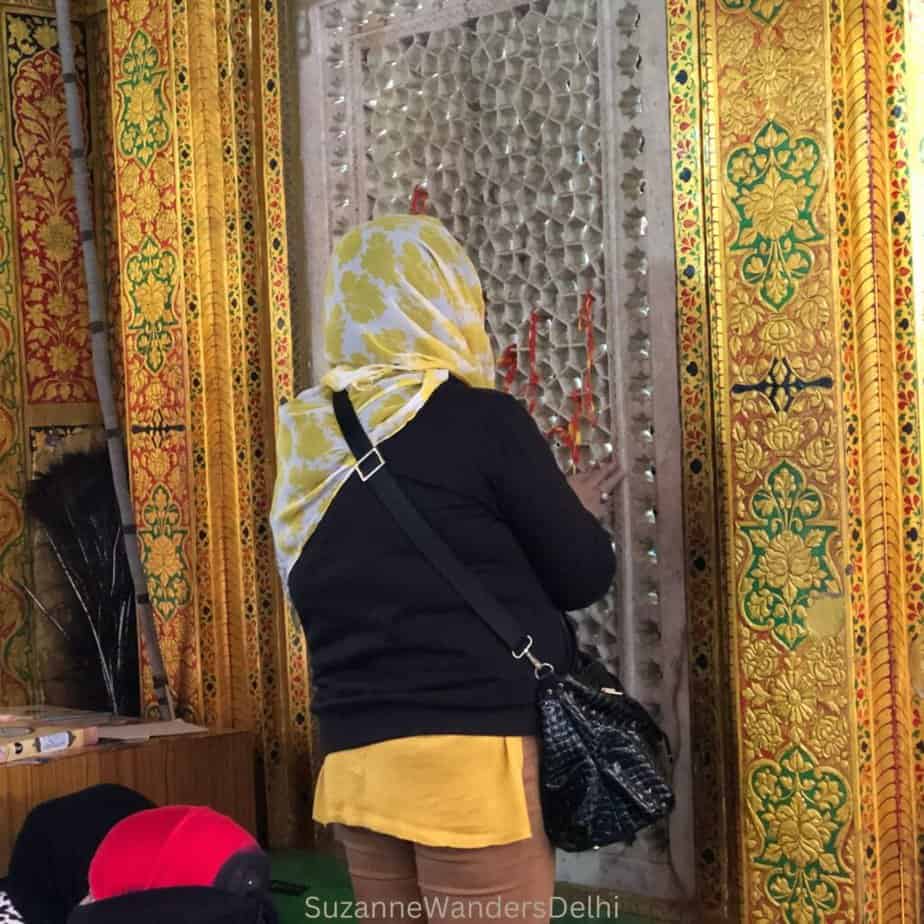
Women are not permitted to enter the enclosed area where the tomb is and must stay on the verandah. They can view the tomb through the jali (stone lattice screen) and tie sacred red or yellow threads on the jali. Offerings to the saint can be given to a male custodian who will take those into the tomb for you.
It is customary to first offer prayers at the tomb of Amir Khusro, the poet and a disciple of Hazrat Nizamuddin, and then the tomb of Hazrat Nizamuddin.
Some devotees come from many miles away and have little money. Do not be surprised if you see them eating, praying, singing and sometimes crying. The dargah permits them to sleep on the premises, and at night they sleep beside the tombs (and I mean, literally beside the tombs).
A Word of Caution
You may be confronted by beggars and various officials asking for donations to the dargah. None of this is mandatory but you may want to have small bills on hand for ‘donations.’ I also recommend not bringing any valuables and keeping a close hold on your personal items.
Thursday and Sunday are very busy. If you do not like crowds, don’t go on these days unless it’s early in the morning.
Qawwali Singing at the Dargah
Sufi Islamic devotional singing is called qawwali and the singing at Hazrat Nizamuddin Dargah is legendary. The Nizami family have sung qawwalis at the dargah for 700 years. Their qawwali singing is even featured in the Bollywood block buster “Rockstar.”
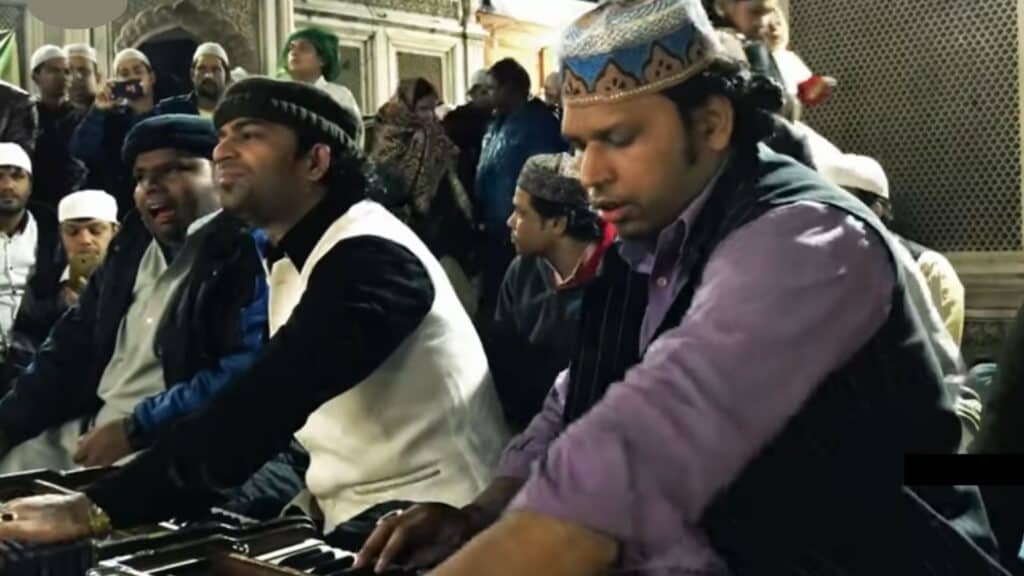
This is a magical experience, the qawwalis are mesmerizing, and many visitors say they come away with a sense of peace and serenity.
The qawwali starts every night just after the maghrib namaz (evening prayers) at dusk. Special qawwalis are sung on Thursday when hundreds attend. There are usually two sessions on Thursday, one at dusk and another around 9:00 pm. In winter there is one performance in the evening only. Timing of qawwali is approximate as it is based on the time of the evening prayers which change marginally daily.
The courtyard gets very crowded – it’s best to go early to make sure you have a place to sit on the floor. At the end of the qawwali, the singers stand up and offer a prayer to the Sufi saint.
Legend of the Baoli (Stepwell)
Adjacent to the dargah is the baoli (stepwell) which caused the legendary riff between the ruler Ghiyasuddin Tughlaq (the father of Muhammad Bin Tughlaq who built the dargah) and Hazrat Nizamuddin.
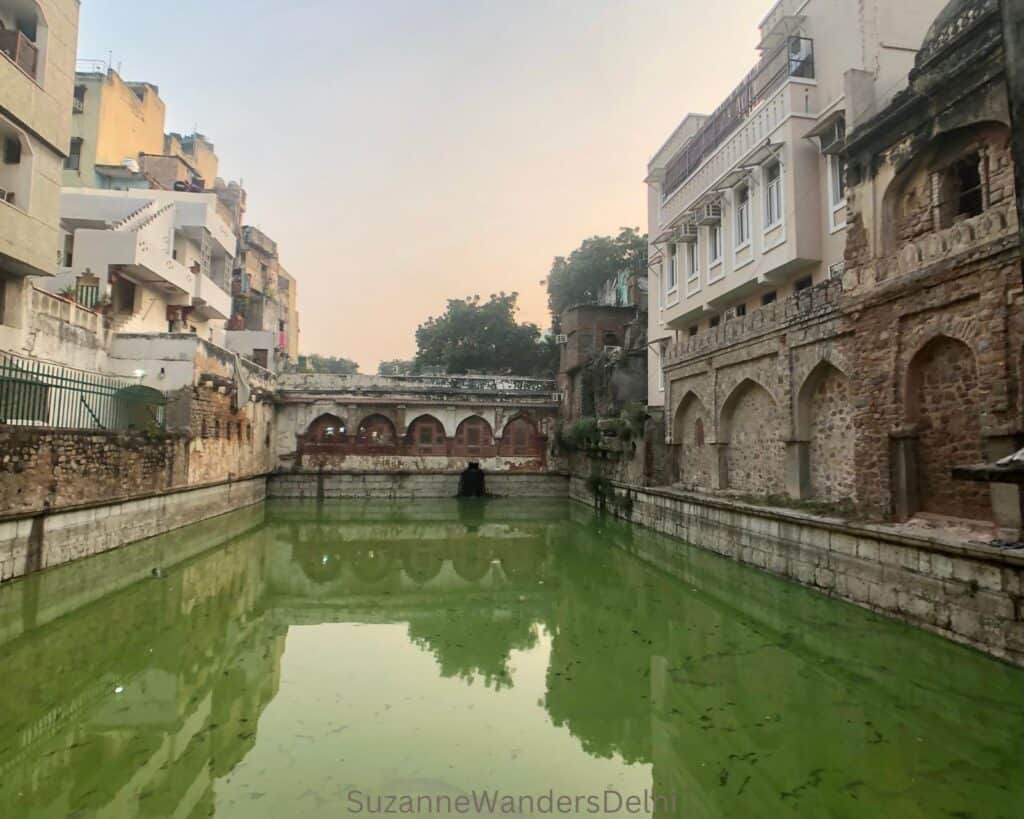
The Sufi saint was building his stepwell at the same time Tughlaqabad Fort was being built. The senior Tughlaq was so obsessed with building the fort, he ordered all labourers in Delhi to work on it, bringing construction of Hazrat Nizamuddin’s stepwell to a standstill. This was a major problem for Hazrat Nizamuddin as the water was needed for his residence.
Hazrat Nizamuddin was furious and cursed the ruler and the fort, even though the labourers devised a way to work on the fort during the day and the stepwell at night. The curse seems to have worked – after 15 years the fort was abandoned and left to ruin.
Today, despite its massive size and impressive remaining structures, Tughlaqabad Fort is largely ignored with very few visitors. Hazrat Nizamuddin Dargah however, has become a major pilgrimage site and sees hundreds if not thousands of visitors each day. Even the baoli gets its fair share of daily visitors. Because the Sufi saint oversaw the construction of the stepwell himself, the water is considered sacred.
The entrance to the baoli is on the back lane that leads into the dargah complex. Recently it was the object of a massive restoration project which was inspired when portions of the wall collapsed deeming the residences built on top of it unsafe.
The residents were relocated to government provided housing and the baoli was completely drained of water and 700 years of muck at the bottom. It has now been restored and filled, with the hope of reestablishing it as a meeting point for the Nizamuddin Basti (neighbourhood).
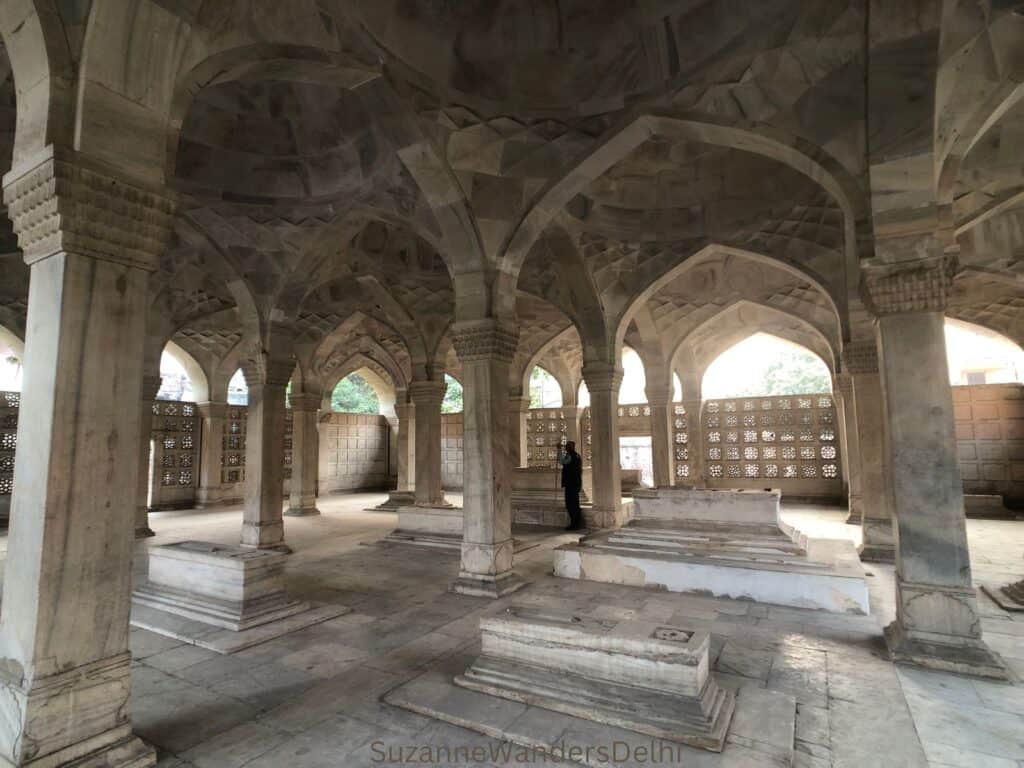

- Hours & Cost: 5:00 am – 10:30 pm, daily (qawwali singing 6:00 – 7:30 pm daily and special qawwali at 9:00 – 10:30 pm on Thursday); free
- Nearest metro station: Jawaharlal Nehru Stadium aka JLN Stadium (Violet line), exit Gate 2 or 3
- What to see nearby: Chausath Khamba (tomb of Mirza Ghalib also located here)
- Where to eat: Karim Hotel, Ghalib Kebab Corner
👍 Insider tip: local NGO Hope Project offers walking tours of Nizamuddin Basti for only INR 500.
4. Adilabad Fort
Adilabad Fort is one of the most off the beaten path sites in Delhi – most locals don’t even know it exists. The fort is part of the Tughaq dynasty, which fell into decline shortly after it was completed, leaving it almost completely forgotten. It was built by Mohammad Bin Tughlaq, who also built Hazrat Nizamuddin Dargah, in 1326.
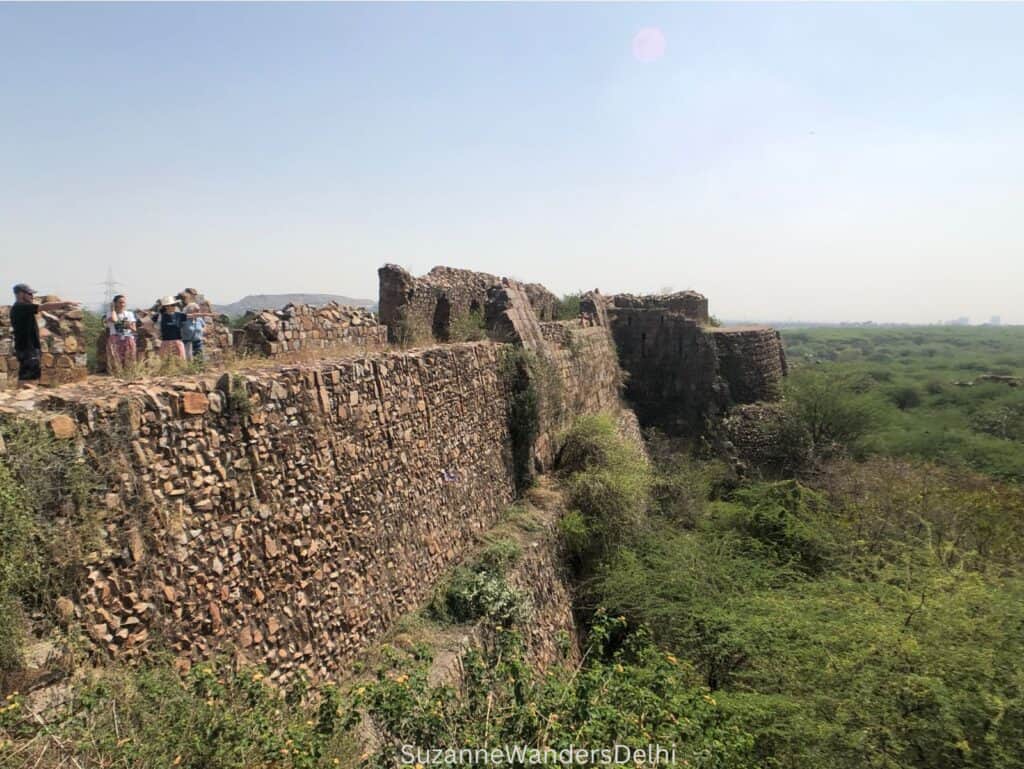
It’s a little hard to find, but if you walk through Kaya Maya Park you will find the entrance.
Adilabad Fort was built as an outlying citadel to the city of Delhi. It was connected by a causeway to Tughlaqabad Fort (now across the busy roadway) and intended to provide protection by building huge fortified walls surrounding the city, then called Jahanpanah.
The fort by itself is not as impressive as Tughlaqabad Fort, but given its location and use as a citadel it became very important in terms of protection for the city residents.
Mohammad Tughlaq moved the capital and most of its residents to Daulatabad and realizing his poor decision, moved them back to Jahanpanah two years later. This left him financially ruined and he lost many subjects due to disease and harsh conditions in the moves. He is often referred to as ‘The Mad King’ for this catastrophic decision.
- Hours & Cost: 9:30 am – 6:00 pm, daily; free
- Nearest metro station: Tughlaqabad (Violet line), exit Gate 1
- What to see nearby: Tughlaqabad Fort
- Where to eat: Buddy’s Kitchen
👍 Insider tip: Do not believe anyone who tells you there is a fee for this site, or that it is only free with paid admission to Tughlaqabad Fort. It is a common scam. Just ignore them and carry on.
5. Indira Gandhi Memorial Museum
Indira Gandhi Memorial Museum is the former family home and place of assassination of past Prime Minister Indira Gandhi, India’s only female prime minister to date.
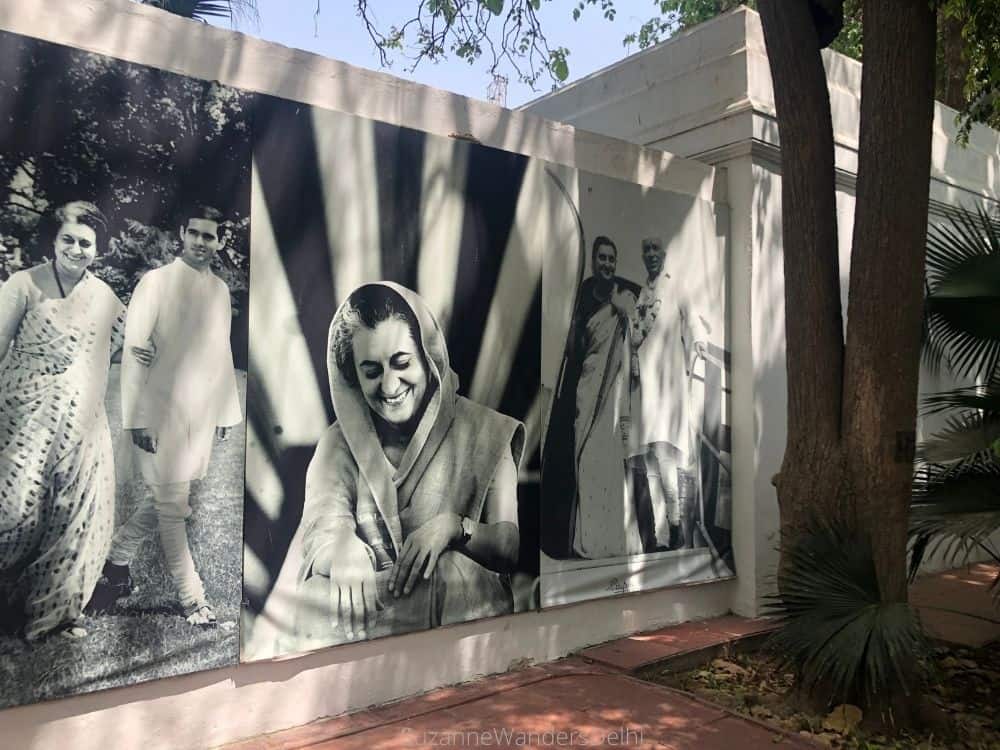
She was assassinated in her garden by her own body guards on October 31, 1984. Her assassination triggered anti-Sikh riots which killed more than 3,000 Sikhs in Delhi alone.
The museum is an off the beaten path site in Delhi for tourists, but not for Indians. It’s usually fairly busy – Indira Gandhi was one India’s most memorable prime ministers.
Unconventionally, the spot Indira Gandhi fell in the garden after she was shot is covered in protective glass and her blood stains are still visible. The museum also displays the blood stained sari she was wearing when she was assassinated.
Indira Gandhi’s father was Jawarhalal Nehru, India’s first prime minister. Indira held several cabinet posts during Nehru’s time in office. She was originally elected as Prime Minister with the support and influence of Congress Party who thought she would be easy to control. This proved very wrong as Indira Gandhi had amazing resolve and became a dominating figure in Indian politics.
India’s Iron Lady
Often referred to as India’s Iron Lady, Indira Gandhi was a beloved and sometimes reviled leader. She was responsible for India’s victory over Pakistan in 1971, resulting in the formation and independence of Bangladesh (formerly East Pakistan). But she was also responsible for one of the darkest times in independent India, the Emergency.
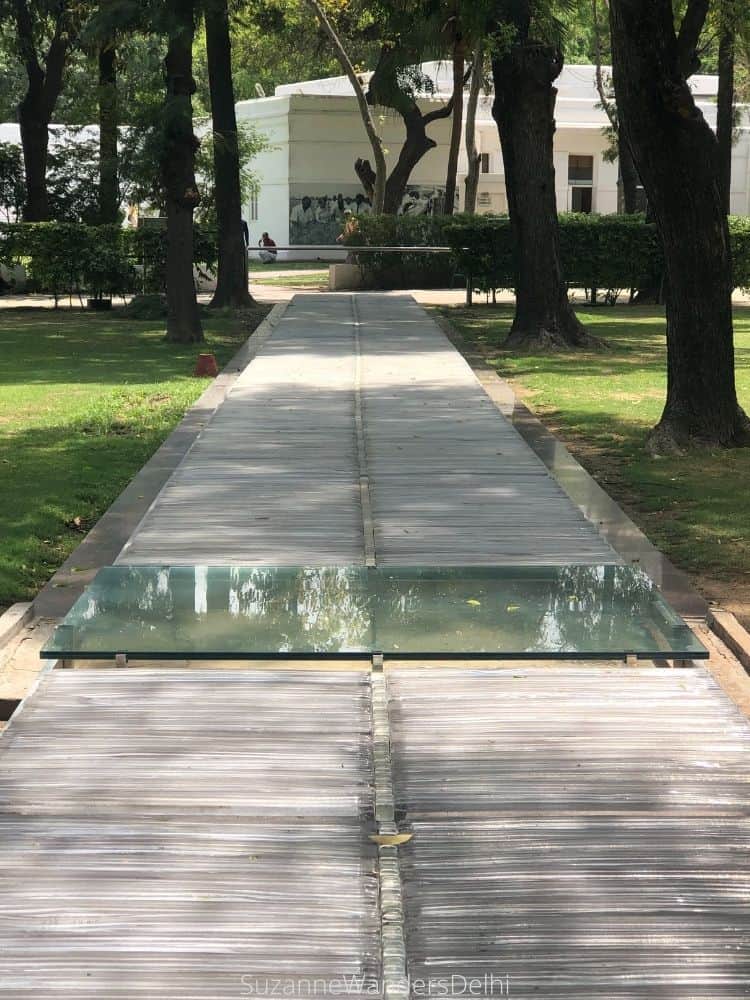
During the Emergency, civil liberties were suspended, protesters and strike leaders were detained, the press was censored and there were many human rights violations including the forced sterilization of nearly 8 million Indian boys and men. The state of emergency was declared on June 25, 1975 and lasted 21 months.
Despite this, she held the office of Prime Minister twice from 1966 to 1977 and again from 1980 until her assassination. She remains one of the most fearless and polarizing figures in Indian political history.
- Hours & Cost: 9:30 am – 4:45 pm, daily (closed Monday); free
- Nearest metro station: Lok Kalyan Marg (Yellow line), exit Gate 1
- What to see nearby: Gandhi Smriti Museum, Pradhanmantri Sangrahalaya, Safdarjung Tomb
- Where to eat nearby: Gujarati Restaurant (in Gujarat Bhavan), Diggin Cafe, Mysore Cafe
6. Okhla Bird Sanctuary
In the middle of the busy metropolis is the Okhla Bird Sanctuary, a quiet oasis on the Yamuna River. It hosts over 300 species of birds including threatened and endangered and migratory birds.

The thorny scrub, grassland and wetland make an ideal habitat for birds, butterflies, reptiles and some mammals, like the Indian mongoose and the black-naped hare.
If you enter from the South entrance closest to the Okhla Bird Sanctuary metro station you can take the main trail (paved road). Follow it all the way until it turns into a dirt road, and then take a left onto the wooden bridge to access the reed beds.
To get one from end of the sanctuary to the other there is an optional auto rickshaw service for INR 30 a person. I don’t recommend this for bird watching since a quieter environment is better. This is a very off the beaten path site in Delhi that gets few international tourists.
How to See More Birds
To increase your chances of bird sightings wear neutral or camouflage coloured clothing, be as silent as possible and go early in the morning. If you have binoculars, bring them. Migratory birds come through in the months of November to March. The reed beds are the best place for bird sightings. There are also a couple of watch towers in the sanctuary to view birds in flight.
The number of bird species in the sanctuary has decreased substantially in recent years due to climate change, pollution, increased construction and noise in the surrounding area.
The sanctuary has limited facilities. The last time I was there, there was one toilet by the South entrance and it wasn’t clean. You cannot buy food or drinks inside so make sure you bring water and any snacks you might need.
- Hours & Cost: 7:30 am – 5:00 pm (winter) & 7:00 am – 5:30 pm (summer), daily; INR 350 foreigners and INR 1000 for a camera
- Nearest metro station: Okhla Bird Sanctuary (Magenta line), exit Gate 1 or 2
- What to see nearby: DLF Mall of India, Worlds of Wonder Amusement & Water Park, Swaminarayan Akshardham
- Where to eat: Burma Burma Restaurant & Tea Room, The Big Chill Cafe, Noida Social (all at DLF Mall of India)
7. Sulabh International Museum of Toilets
As quirky as this museum sounds, it has a mission to highlight and tackles a very real health problem in India.
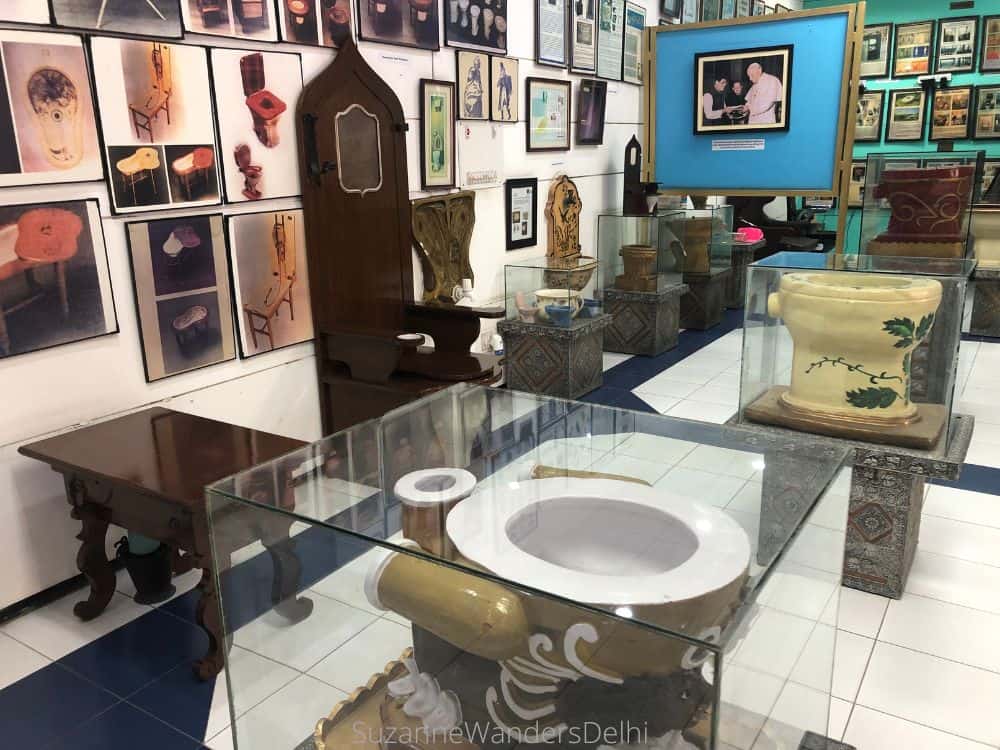
The museum chronicles the history of the toilet from 2500 BC through a bizarre and rare collection of objects, photos and information. But it also acts as a means to educate the public and policy makers about the right and need of sanitation for all.
The museum is the brainchild of social reformer Dr. Bindeshwar Pathak, the founder of Sulabh Sanitation Movement. Dr. Pathak has worked extensively to remove the social stigma attached to the Dalit caste (the ‘untouchables’) and make toilets accessible to all through low cost toilet technology and self sustaining sanitation systems.
Under the banned caste system, the Dalits were the social outcasts, the ones destined to handle the excrement of others amongst other low jobs such as leather tanning. This rendered them ‘untouchable’ by members of the higher castes and relegated them to the outskirts of society.
The caste system in India was constitutionally abolished in 1950, but discrimination still exists. Dr. Pathak has been hailed as a crusader for social reform in his efforts to uplift the Dalits through education programs and the building of over 1.5 million toilets across India.
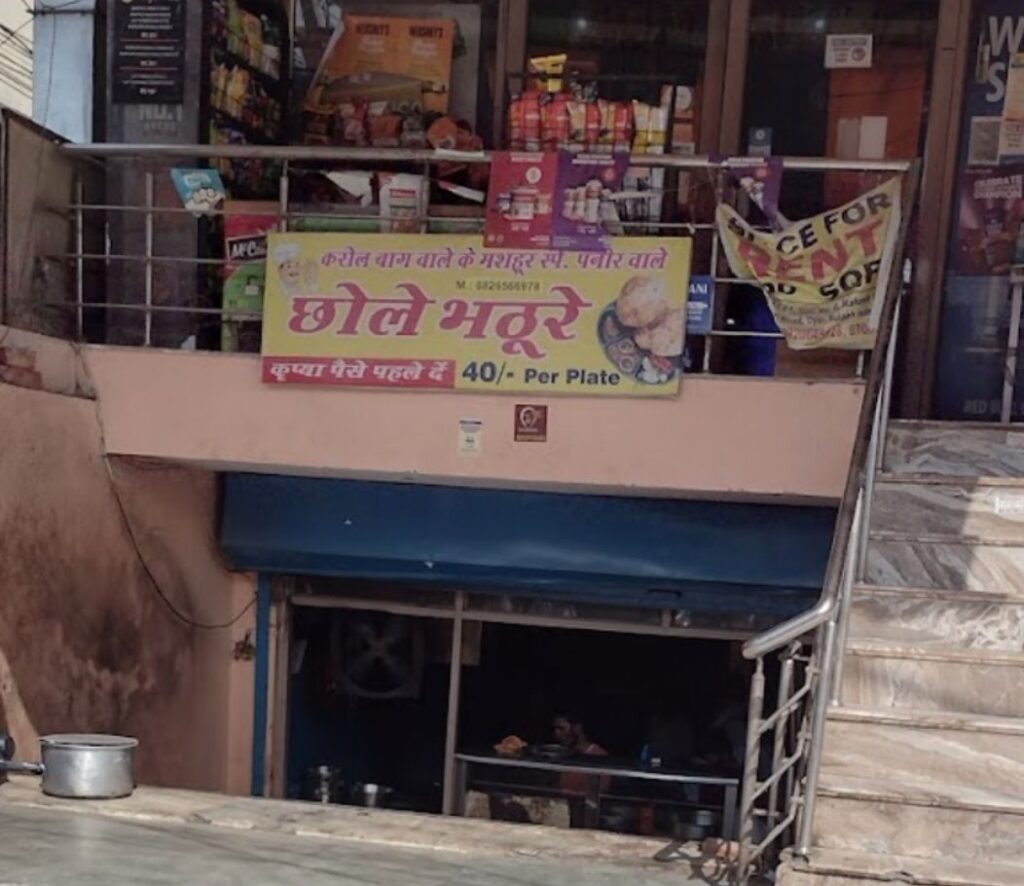
- Hours & Cost: 10:00 am – 5:00 pm, daily; free
- Nearest metro station: Dashrath (Magenta line), exit Gate 2
- What to see nearby: Indian Air Force Museum
- Where to eat nearby: Chole Bhature Shop
8. National Crafts Museum & Hastkala Academy
Sometimes called India’s most inspiring museum, this little gem is one of those off the beaten path sites in Delhi that is unfairly overlooked by visitors.
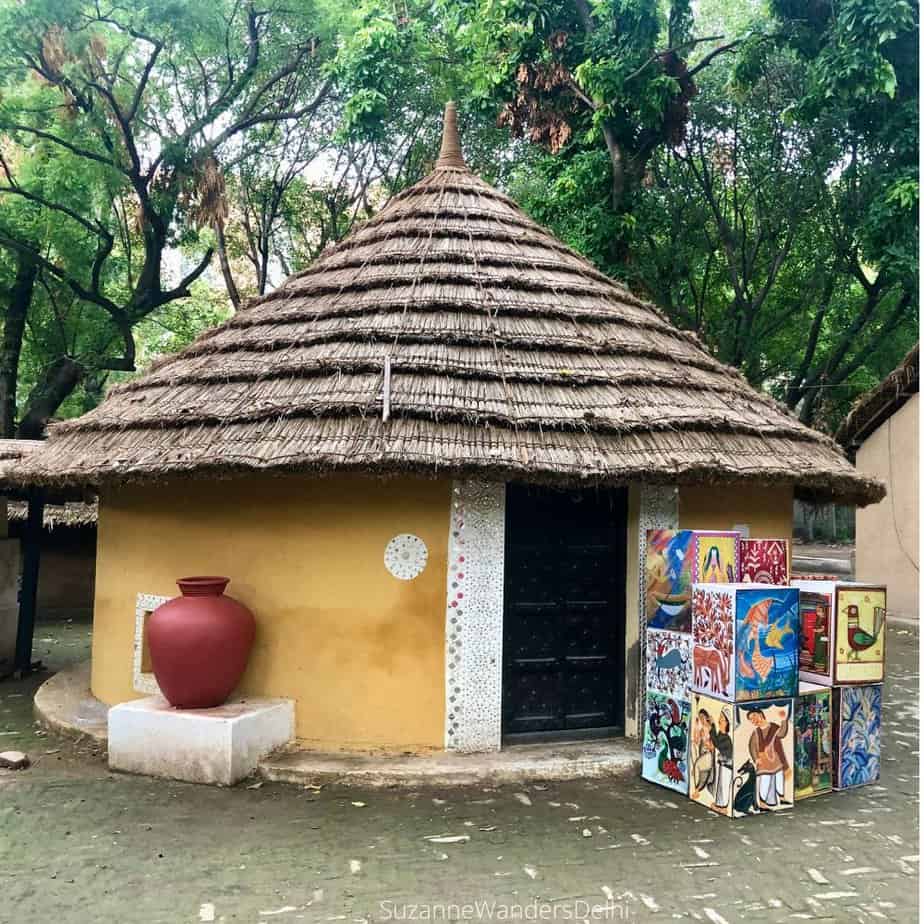
The museum displays traditional crafts and art from across India and hosts a constantly changing group of artisans, most of whom would otherwise be ignored.
The grounds are meant to resemble a village as opposed to a formal museum with exhibition halls. There is an impressive outdoor complex with replicas of village dwellings, courtyards and shrines from different parts of India, all built with regional materials.
Artisans give live demonstrations and the public are invited to join workshops on different traditional craft methods. The museum has a very good shop where you can buy traditional crafts at reasonable prices. It’s definitely a gem among the off the beaten path sites of Delhi.
- Hours & Cost: 9:30 am – 6:00 pm, daily (closed Monday); INR 300 foreigners
- Nearest metro station: Supreme Court (Blue line), exit Gate 4
- What to see nearby: National Gallery of Modern Art, Purana Qila, National Science Centre
- Where to eat: Cafe Lota (at the museum)
👍 Insider tip: Usually museum restaurants are mediocre, but Cafe Lota at this museum is excellent. In fact, many people come here only to eat at the cafe. The cafe entrance is just outside the ticket booth so you don’t need to pay the museum entrance fee to get into the restaurant.
9. Lodhi Art District
Lodhi Art District is India’s first open air art district and the murals are truly amazing. Since 2015 contemporary artists from India and around the world have been invited to create art in this unique space.
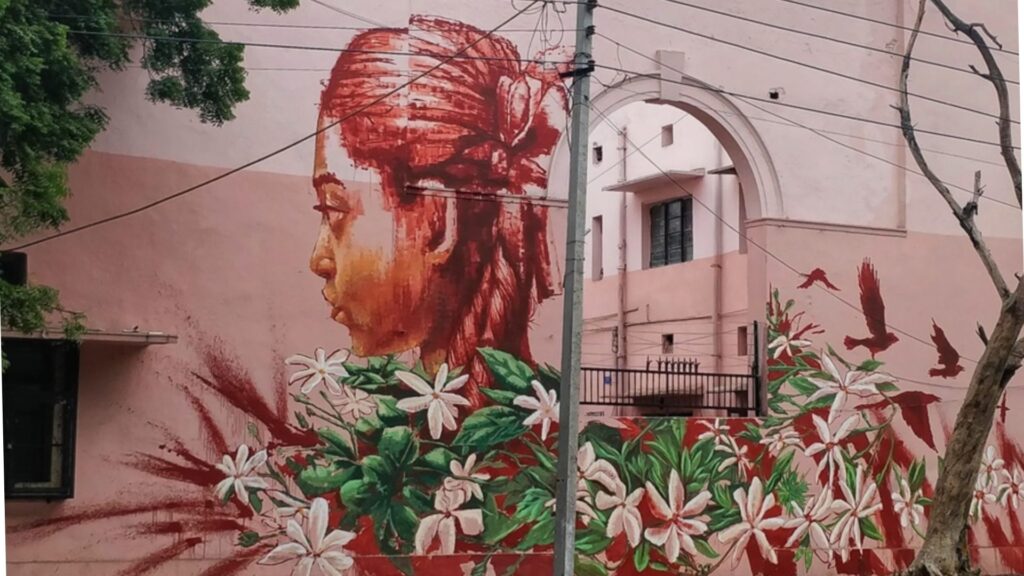
There are over 50 murals which address many themes such as minority communities, LGBTQ issues, Indian culture and values, and the environment.
The art district is located in the neighbourhood of Lodhi Colony, which was built by the British to house their government employees in the 1940s.
It was chosen as the site for the murals because of its central location, massive straight walls and pedestrian friendly lanes. The three story government owned buildings all have arched doorways with windows on either side making them an ideal canvas.
The murals are located between Khanna Market and Meharchand Market. St+Art Foundation, the non profit organization responsible for this project has a great map of the murals and their names at: St+Art India’s location guide.
You could easily spend hours strolling around the leafy lanes of the neighbourhood and discovering the murals and stopping at one of the cafes for a break.
- Hours & Cost: 24/7 but go during the day; free
- Nearest metro station: Jawaharlal Nehru Stadium aka JLN Stadium (Violet line), exit Gate 1
- What to see nearby: Lodhi Garden, Safdarjung Tomb, Khan Market
- Where to eat: Jamun, Jaatre for ice cream, Devan’s for coffee
10. Laxminarayan Mandir (Birla Mandir)
Laxminarayan Mandir was the largest Hindu temple in Delhi when it was built. It is a beautiful and interesting temple with fresco paintings, carvings and marble icons all handcrafted by artisans from Varanasi (one of India’s holiest cities).
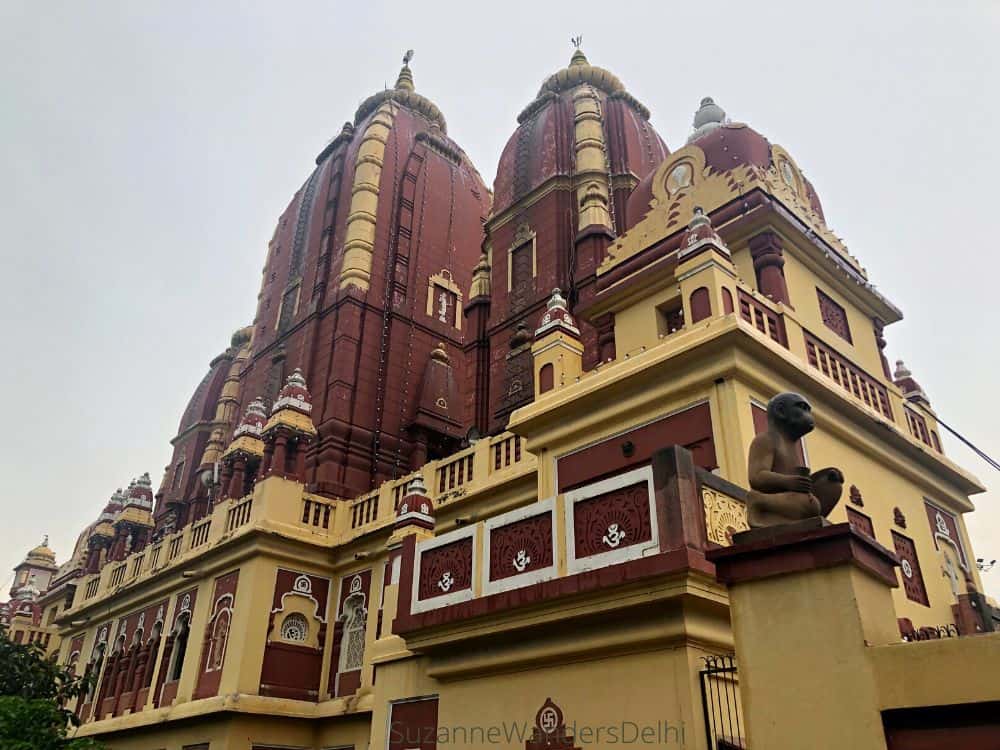
There are several smaller temples on the grounds, including a Buddhist mandir and a Lord Shiva temple where you must walk through the gaping mouth of a monster to enter. The gardens have carved fountains and statues of animals all representing aspects of Hinduism.
History of the Temple
Laxminarayan Birla is dedicated to Lord Vishnu (Narayan) and his consort, Lakshmi. It was built by the industrialist Birla family in 1939 as the first of a series of temples built by them across India, commonly called Birla Mandirs.
Mahatma Gandhi inaugurated Laxminarayan Mandir with the express wish the temple be open to all Indians regardless of caste.
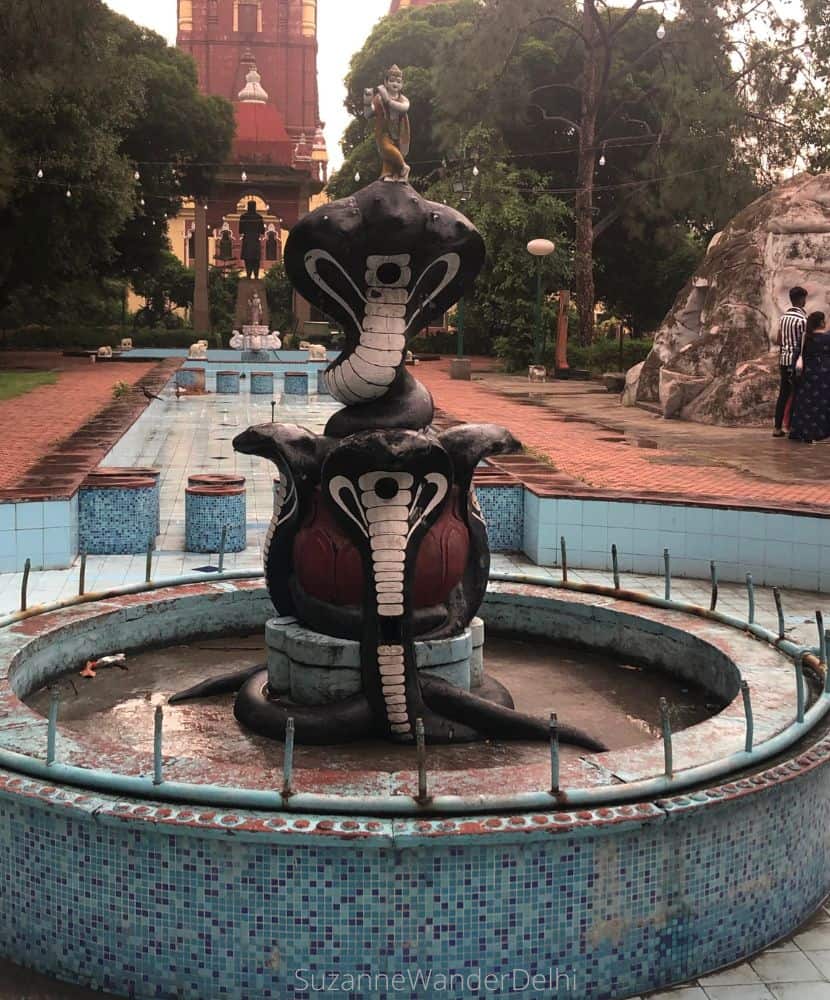
Each year the temple attracts thousands of devotees, especially during the major festivals of Diwali (Festival of Lights) and Janmashtami (Lord Krishna’s Birthday), when you will see hundreds lined up on the street waiting to enter.
Mobile phones and photography are not allowed inside the temple but you can leave them in a secured locker area (free). You must remove your shoes before entering. There is a little souvenir/gift shop on the premises.
- Hours & Cost: 4:30 am – 9:00 pm, daily (closed between 1:30 – 2:30 pm); free
- Nearest metro station: R.K. Ashram Marg (Blue line), exit Gate 5
- What to see nearby: Gurudwara Bangla Sahib, Sacred Heart Cathedral, Sankat Mochan Hanuman Mandir
- Where to eat: Saravana Bhavan, Haldiram’s
11. Daryaganj Sunday Book Market
The Daryaganj Sunday Book Market is legendary in Delhi. Known for its huge selection and bargain prices, it is a favourite of bibliophiles and students who come to purchase their course books at a fraction of the cost.
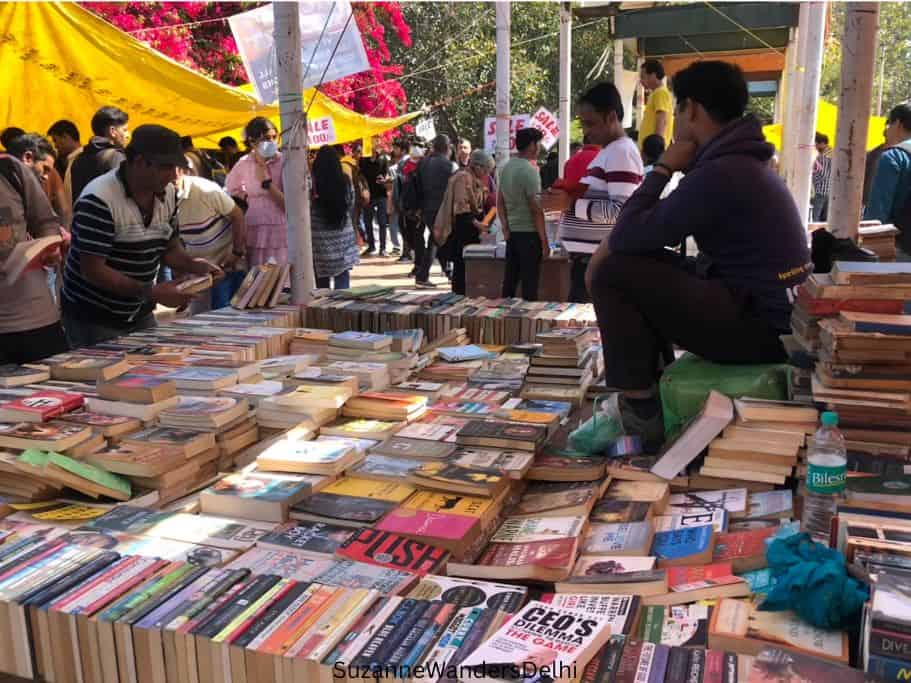
The market sells everything from student text books to literary classics, both new and used. It’s now located in Mahila Haat, across the road from the old location.
Secret Library
The Sunday Book Market is also a secret library of sorts. Indian women sometimes pick up ‘romance’ novels that are taboo at home. They purchase them, read them, hide them, and then return them to the vendor for a good portion of the selling price.
Be prepared to browse and look through lots of books. They are piled up in stacks or neatly laid out on the ground, not necessarily in any kind of order.
Bring a bag for your purchases because not all vendors have them. Unless there is a sign that says ‘fixed price’ or ‘price per kg’ you should bargain.
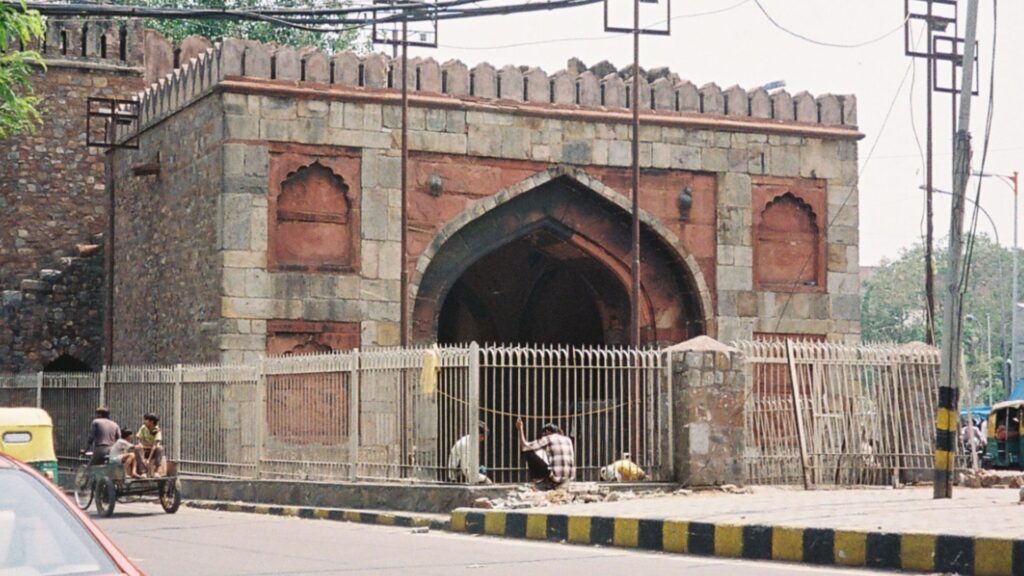
- Hours & Cost: 9:30 am – 6:00 pm (summer) & 10:30 am – 5:00 pm (winter), Sunday only; free
- Nearest metro station: Delhi Gate (Violet line), exit Gate 4
- What to see nearby: Raj Ghat, National Gandhi Museum and Library, Delhi Gate
- Where to eat: Bhaja Govindam
12. Feroz Shah Kotla Fort
This is quite an impressive site with extensive ruins including one of the oldest active mosques in the world, a citadel, palace, secret chambers and a unique circular baoli (stepwell). A 3rd century Ashoka Pillar is also here, on top of a three storied ruin.
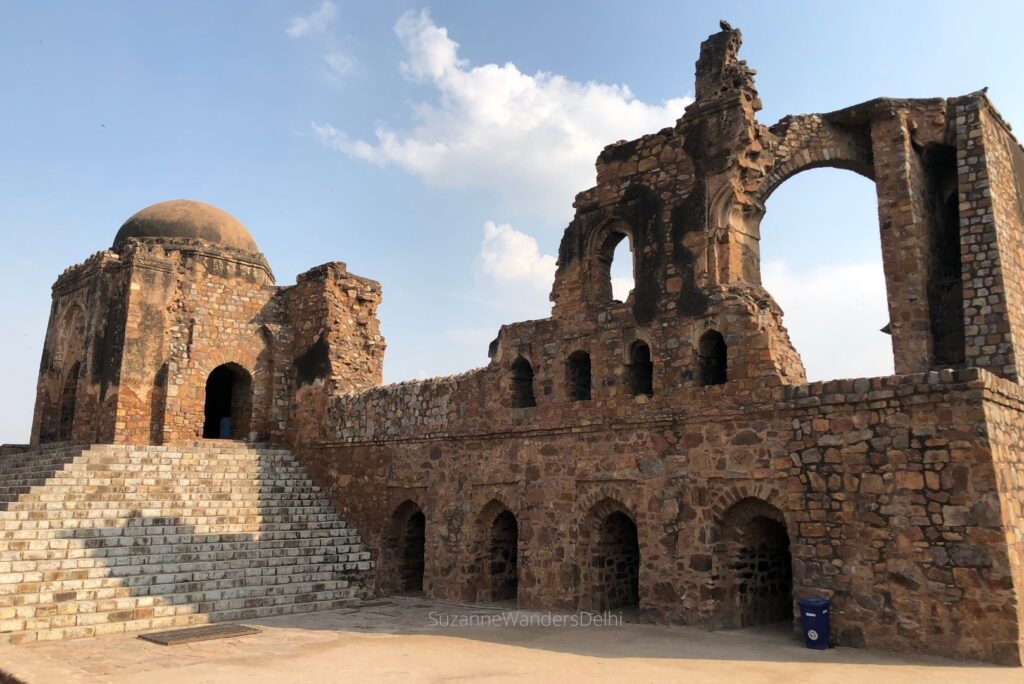
Today the fort is as famous for its historical structures as for its current residents, the djinns. It’s a popular with locals, but one of the off the beaten path sites in Delhi that doesn’t get a lot of tourists.
The fort was built by Feroz Shah Tughlaq in 1354 as the citadel for his fortified city Firozabad, the fifth historical city of Delhi. The city and capital were moved here from Tughlaqabad Fort because of the water shortage in that area.
This fort was built along the banks of the Yamuna River which solved the water issue. The baoli (the only circular baoli in Delhi) has underground water chambers and a canal system which would have supplied water to the entire fort, including the palace, gardens and for the animals.
Timur the Invader Copied the Mosque
We know from the descriptions of contemporary chroniclers like Timur the Invader, the fort was magnificent. It’s easy to imagine the past splendour given its size and the existing structures. Timur was so impressed he built a replica of the Jami Masjid (the mosque) in Samarkand.
In later years the fort was heavily plundered for building materials by subsequent rulers and much of it was used to build Shahjahanabad.
When walking through the ruins of the Jami Masjid (you will know it from the long flight of stairs leading up to it) remove your shoes and women should cover their heads. Even though it is a ruin, it is still an active mosque.
For women, particularly if you have long hair, I recommend keeping it well covered so you don’t tempt the djinns. Actually, this is more to appease other visitors who will surely be concerned and warn you to cover your hair.
The Ashoka Pillar
The most incredible thing at Feroz Shah Kotla Fort is the 3rd Century Ashoka Pillar, a polished sandstone pillar inscribed in ancient Brahmi script. The inscriptions are seven teachings based on Ashoka’s Buddhist beliefs on how to rule righteously and spread dharma.
Feroz Shah Tuglaq had the pillar brought 90 miles from Topra and it was a herculean task. It took 8,000 soldiers to transport the pillar by an enormous carriage and then on the Yamuna River in a massive boat.
Feroz Shah Tuglaq erected the pillar on top of a third storied pyramidal building. Today it still stands, even though the fort is in ruins. It is one of twenty surviving Ashokan pillars throughout India and is named Minar-e-Zareen, the Golden Pillar.
It’s believed the chief of the fort djinns, Laat Waale Baba, lives in the Minar-e-Zareen. He is a powerful djinn and any wishes written on paper and tied to the railing of the pillar will be granted, if the believer touches the pillar.
The Djinns
Stemming from ancient Islamic belief, djinns are supernatural creatures, either good or bad. They are capable of shape shifting and traveling long distances in a short amount of time. They can control and manipulate humans and live thousands of years. It is so widely believed that djinns live at Feroz Shah Kotla Fort, it has become an accepted fact.
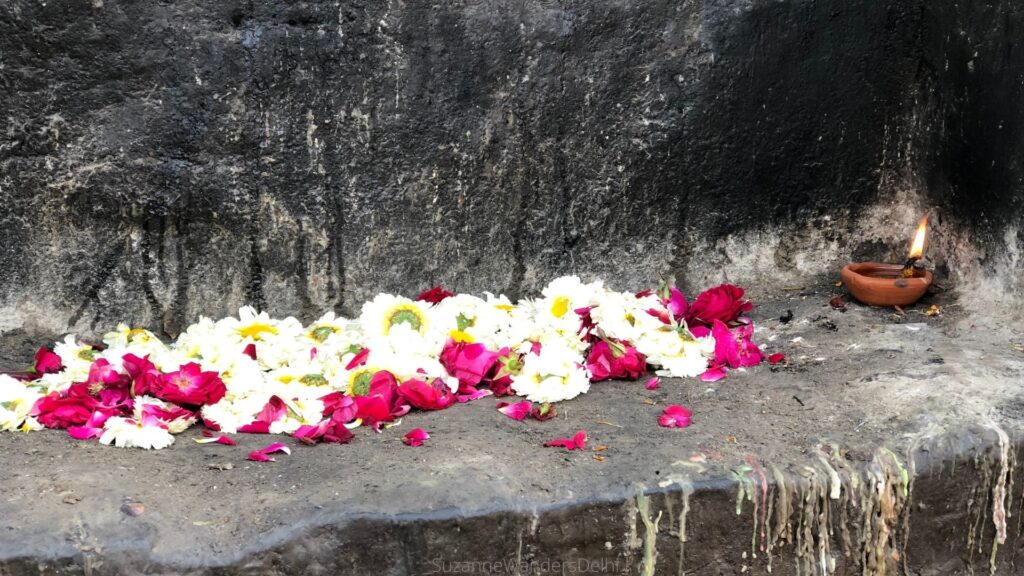
This belief took hold just after the Emergency in 1977 (a dark time in India’s history when civil liberties were suspended). A saint living in Feroz Shah Kotla Fort told his followers that certain energies in the form of djinns were present and could fulfil wishes.
Ever since, every Thursday (an auspicious day when the djinns are likely to be happy and generous) crowds of people leave their requests. They leave secrets and wishes written on paper, light candles, leave flowers, rice and chaadors for the djinns.
Djinns love long hair and are attracted to beautiful women. When I was at Feroz Shah Kotla Fort I was immediately warned by several well meaning women to cover my hair. According to legend, the most evil djinns are locked up in a dungeon beneath the steps of the Jami Masjid at the fort.
A Ministry of Djinns
People believe there is an organized ministry of djinns at the fort, with different departments dealing with different problems. At midnight the djinns hold a meeting to discuss the requests and decide which ones to grant through Allah.
Believers make photocopies of their letters for the djinns and leave them at various places throughout the fort to ensure the correct department receives the request. Devotees must return for seven consecutive Thursdays to ensure their wishes come true.
- Hours & Cost: 7:00 am – 7:00 pm, daily (closed Monday); INR 300 foreigners, children under 15 free
- Nearest metro station: ITO (Violet line), exit Gate 4
- What to see nearby: Raj Ghat, National Gandhi Museum and Library, Shankar’s International Dolls Museum
- Where to eat nearby: Udupi Cafe
13. Shahpur Jat
Shahpur Jat is a small urban village wedged between several upscale South Delhi neighbourhoods. Despite its slightly dilapidated look and tiny lanes, it has become a fashion hub, home to designer studios, boutiques and trendy cafes.
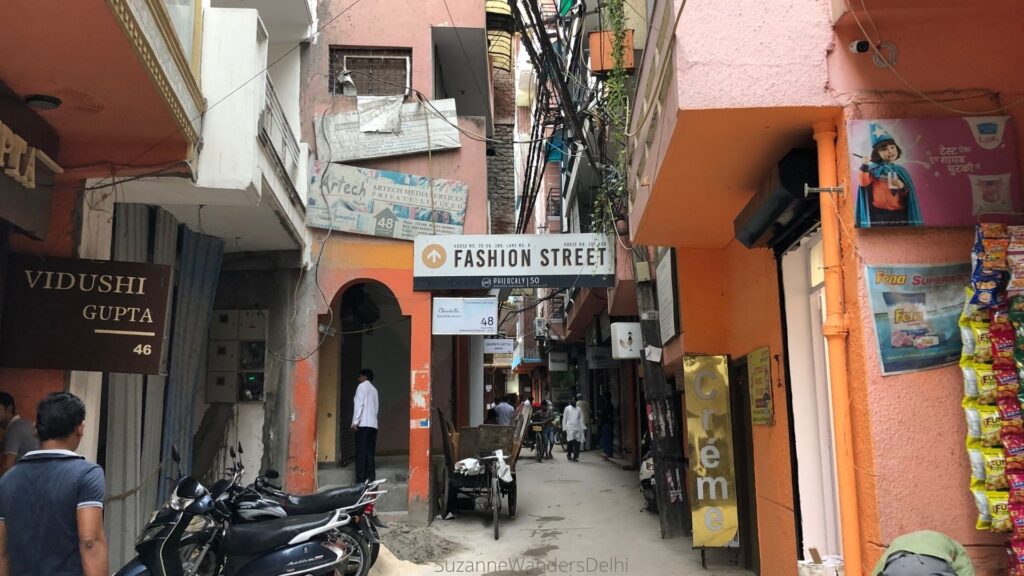
It is most famous for its beautiful wedding fashion and is a go to shopping destination for brides to be and their families, and foreigners in Delhi there to attend an Indian wedding.
Indian wedding fashion is stunning with its elaborate, hand crafted bead and mirror work and bright colours. Take the time to look into some of the boutiques, the outfits are incredible!
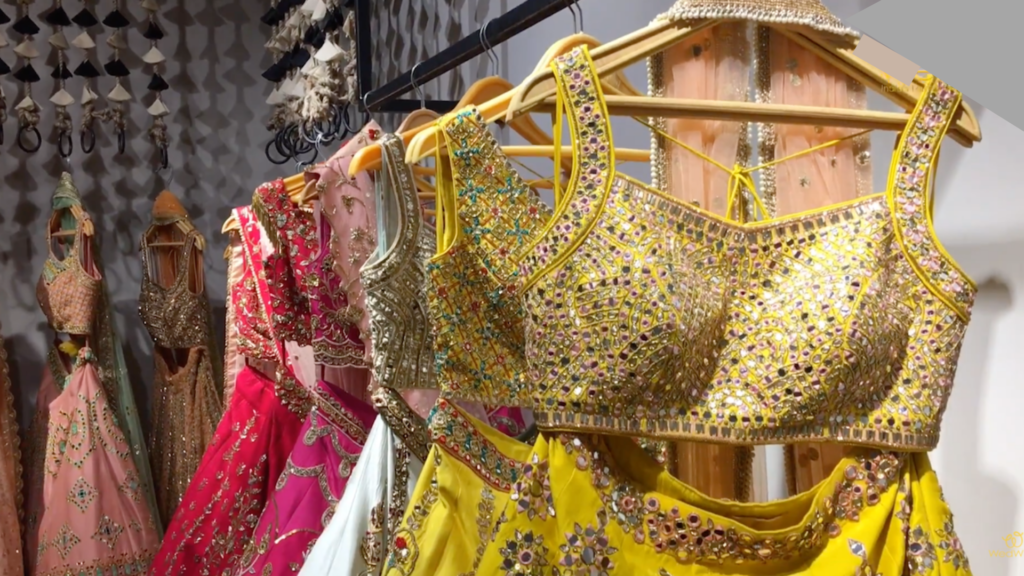
The village of Shahpur Jat was built within and on top of the ancient city of Siri, Delhi’s second city built in 1303. Part of the ancient wall that surrounded Siri is still standing as well as the ruins of Tohfe Wala Gumbad.
The gumbad is clearly visible if you enter Shahpur Jat from the main road, August Kranti. You can view parts of the ancient wall in the back lanes of the village, from DDA Park and Dada Jungi Road.
History of Shahpur Jat
About 900 years ago a community of farmers from Haryana came to the area for its fertile soil and flourished. The village is named after them, shah (wealth), pur (colony) and jat (clan).
It was still a farming village in the 1960s, and whenever they dug into the ground farmers found old walls, tunnels and skeletons. Afraid that the Archeological Survey of India would confiscate the land to commence excavations, the farmers kept quiet and built new buildings over the ruins.
In the 1990s, designers and fashion shops started moving in, attracted by the low rents and number of migrant artisans and dyeing workshops in the area. Now it is a melting pot of retail, urban and village. It is not uncommon to find beautiful boutiques in rundown buildings with the odd cow ambling down the lane.
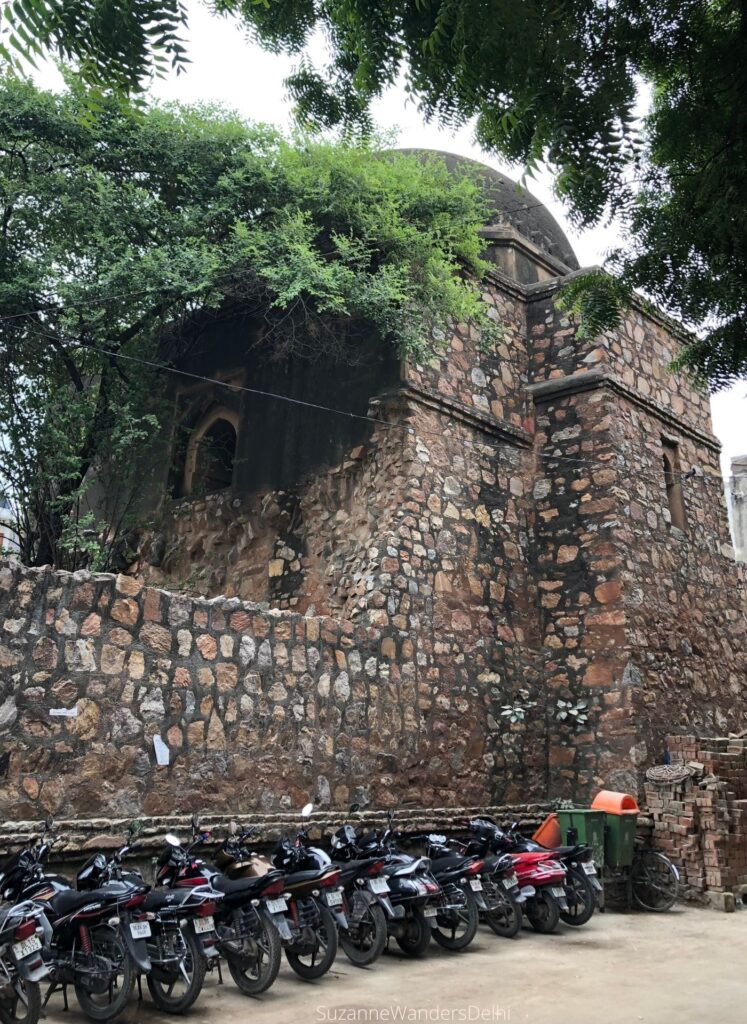
With its cafe culture and winding lanes full of quirky shops and boutiques, it’s a pleasant way to spend an afternoon. You can browse the wedding wear, relax in a cafe and search for the ruins of the ancient city of Siri all within one of Delhi’s original urban villages.
This urban village has remained off the beaten path for many years, but is slowly gaining in popularity, mostly due to its location near Hauz Khas and many top 10 sites in Delhi.
- Hours & Cost: 24/7 but shops are open 11:00 am – 8:00 pm, daily (closed Sunday); free
- Nearest metro station: Hauz Khas (Yellow or Magenta line), exit Gate 2
- What to see nearby: Hauz Khas Market, Mohammad Wali Masjid
- Where to eat: Potbelly Rooftop Cafe, Big Fat Sandwich, Little Saigon
👍 Insider tip: If you like street art, have your camera ready. There are some fantastic murals in Shahpur Jat.
14. Tombs of Green Park
Amid one of Delhi’s quietest and more affluent neighbourhoods is a treasure trove of forgotten 15th century tombs.
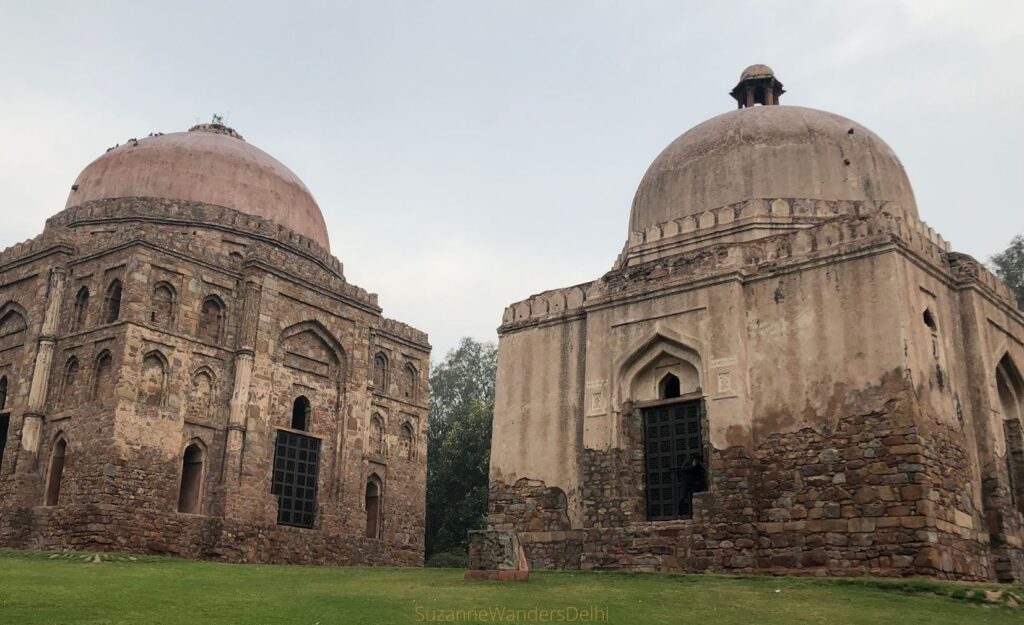
It’s surprising they don’t get more visitors since they are so close to one of Delhi’s most popular areas, Hauz Khas Village, but even most locals are oblivious to them. The tombs are some of the more remarkable off the beaten path sites in Delhi.
I found out about them by accident, walking my dog near the Airbnb we were staying at. I spotted the Dadi Poti Gumbads behind a gate and greenery. After that I found the rest of them.
At one time, Delhi’s landscape was dotted with the domes (gumbads) of tombs as far as the eye could see, but over the years most have disappeared. Unlike so many of Delhi’s forgotten historical sites, the tombs in Green Park are relatively free from encroachment and in good condition.
The whole area is like an unofficial necropolis, but there are few visitors except the locals who frequent the tombs more for the green space than any historical significance.
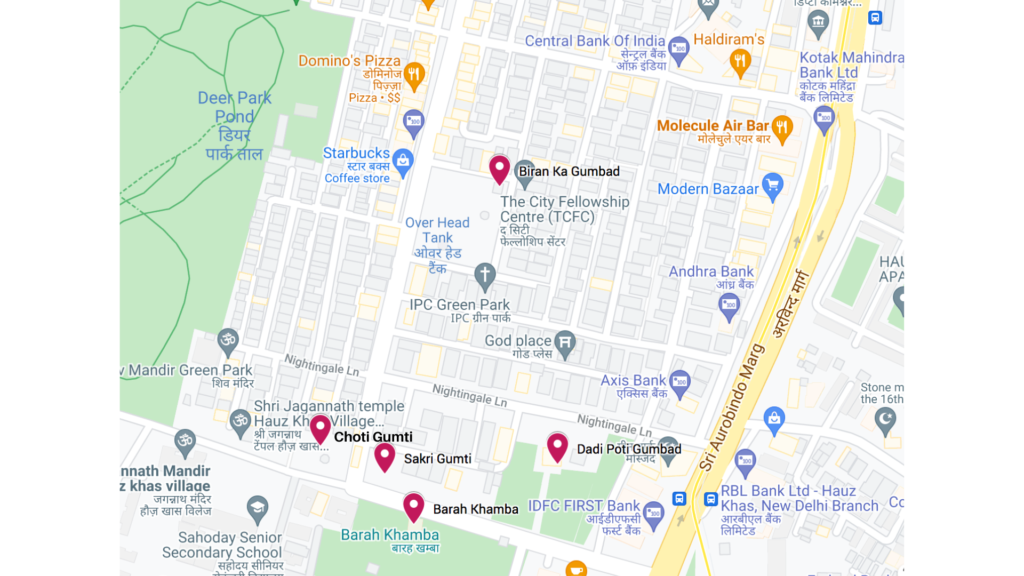
Dadi Poti Gumbad
These are the largest of the tombs in Green Park and the only ones that have timed entry and a guard. At night they become a neighbourhood landmark, when they are beautifully lit up with coloured lights.
Very little is known about the tombs other than the larger tomb, Dadi (Grandmother) is from the Lodhi period and the smaller tomb, Poti (Granddaughter) is from the Tughlaq period.
Because of their names, it is commonly believed they belong to a grandmother and granddaughter, but at the time it would have been highly unusual to dedicate tombs to women. A more likely theory is they are named this way because one tomb is larger than the other.
Choti Gumti
This tomb is one of three, each located on a different corner at the junction of Hauz Khas Fort Road and Block G Road in Green Park. Its name means ‘small dome’ and it certainly does seem like a miniature compared to most other tombs in Delhi.
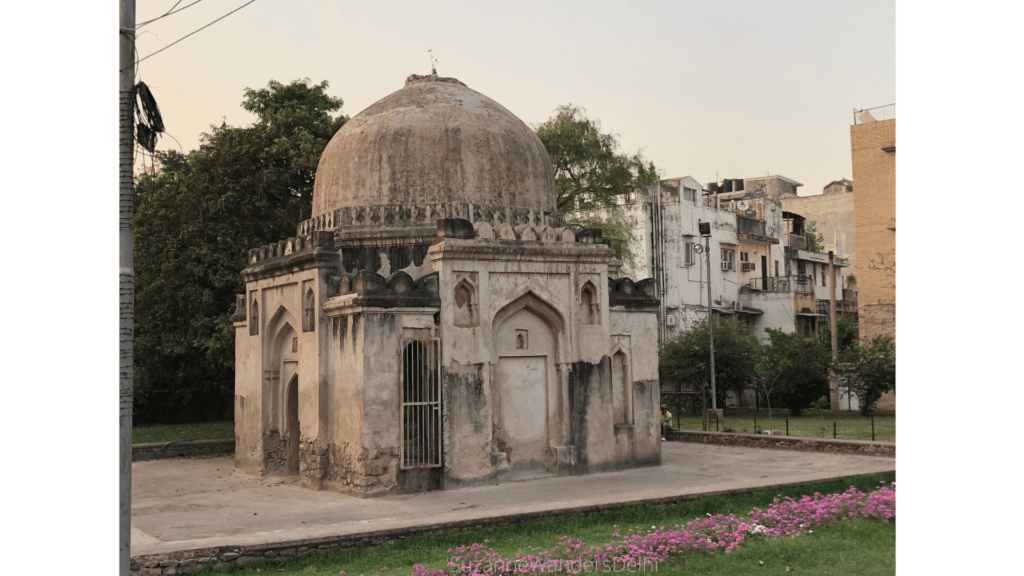
It may have been part of a larger complex but little is known of its origins, other than it was built during the Lodhi period (1451 – 1526). If the narrow gate is open, you can access the roof from a small set of stairs but they are a bit treacherous and there’s not much a view from the top.
It’s a popular spot in the neighbourhood and you will see locals here at all times of the day and evening enjoying the grass and trees surrounding the tomb.
Sakri Gumti
Technically Sakri Gumti is not a tomb because there is no grave but it seems fitting to include it. Its name means ‘narrow dome’ and it is a very petite dome, even smaller than Choti Gumti.
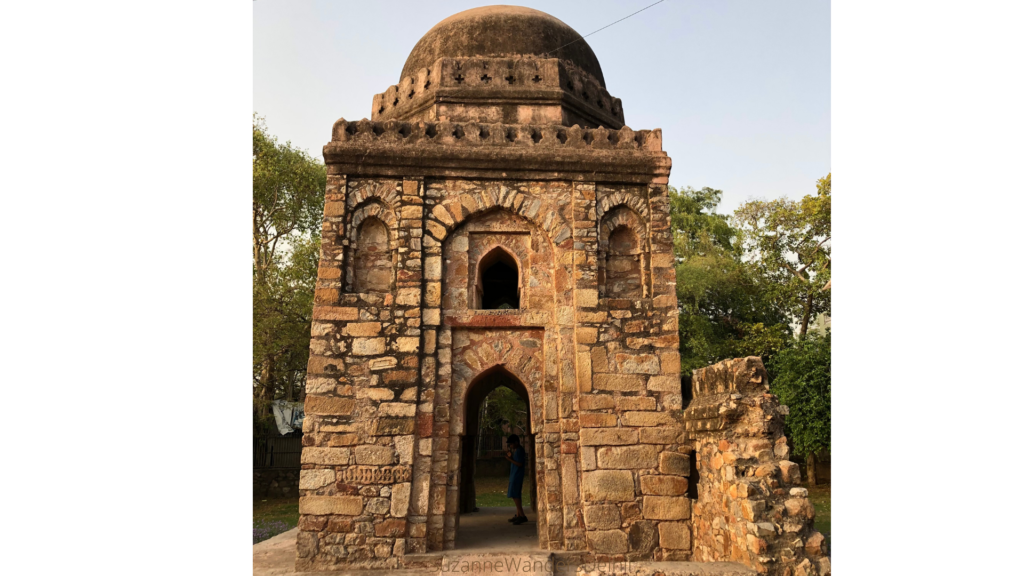
Because of its open arches on all sides it may have been a gateway for a larger structure. There is evidence of a crumbling wall on one side of the gumti, but again almost nothing is known of its origins other than it was built during the Lodhi period.
Barah Khamba
Kitty corner to the Choti Gumti is the larger Bara Khamba, which means twelve pillars. The Bara Khamba gets even less visitors than the gumtis across the street.
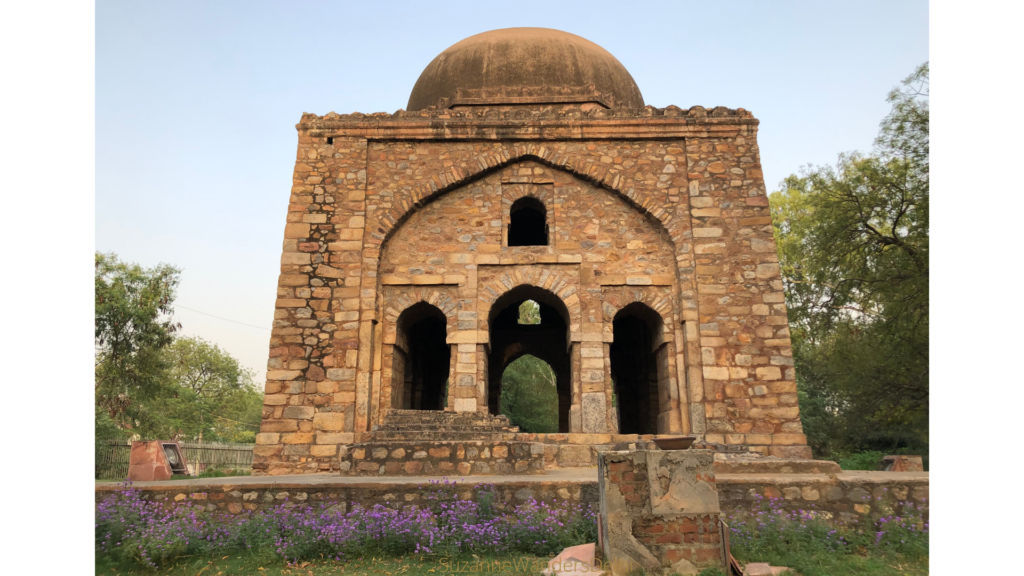
This one is a bit hidden, set back and surrounded by more foliage, slightly up the road. There is one grave inside the tomb and others on the grounds. The ruins of a bastion, well and alcoved square structure at the site indicate this was part of a larger complex, but again we may never know.
Biran Ka Gumbad
This is the last one I discovered and I came upon it entirely by chance while out walking. It is completely hidden and easy to miss.
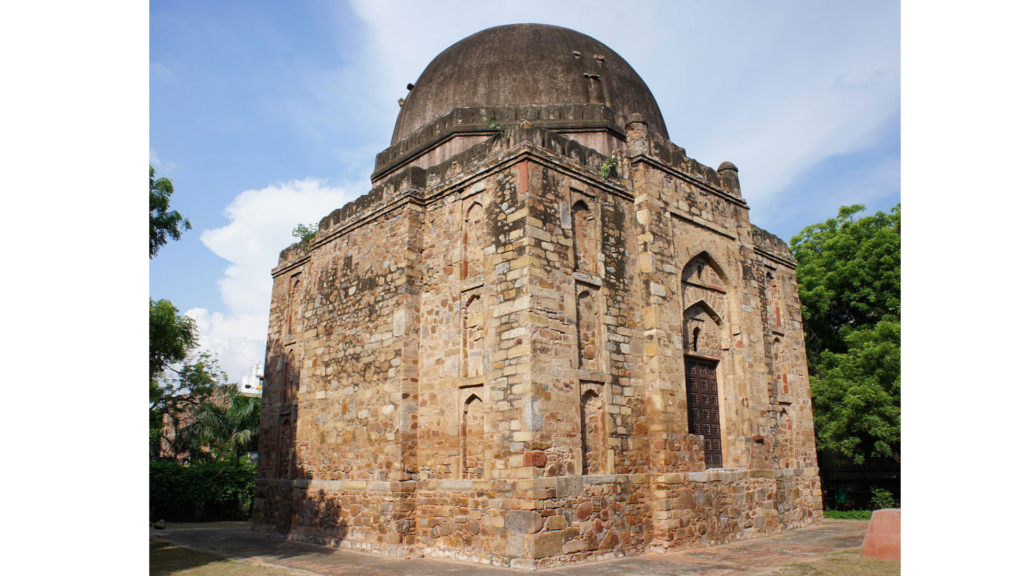
Opposite Starbucks in the Green Park market, there is a side road off the street that the market is on. It’s Block F. Take that road and watch for the gumbad on your right. It is accessible down a narrow lane. It is a larger tomb, built in the Lodhi period but nothing more is known.
Its name means ‘the domed building of the brother’ and may be in reference to the Dadi Poti Gumbad (grandmother granddaughter). There is ruined grave in the tomb and the building features arched niches and a high ceilinged chamber, classical elements of that time period.
- Hours & Cost: 24/7 but go during the day, daily; free
- Nearest metro station: Green Park (Yellow line), exit Gate 4
- What to see nearby: Jagannath Mandir, Hauz Khas Fort, Deer Park
- Where to eat: A2B, Evergreen Sweet House, Veg Gulati
15. Tibet House
Under the guidance of His Holiness the Dalai Lama, Tibet House was built in 1965 to preserve Tibetan culture and create a safe place for Tibetan and Buddhist studies.
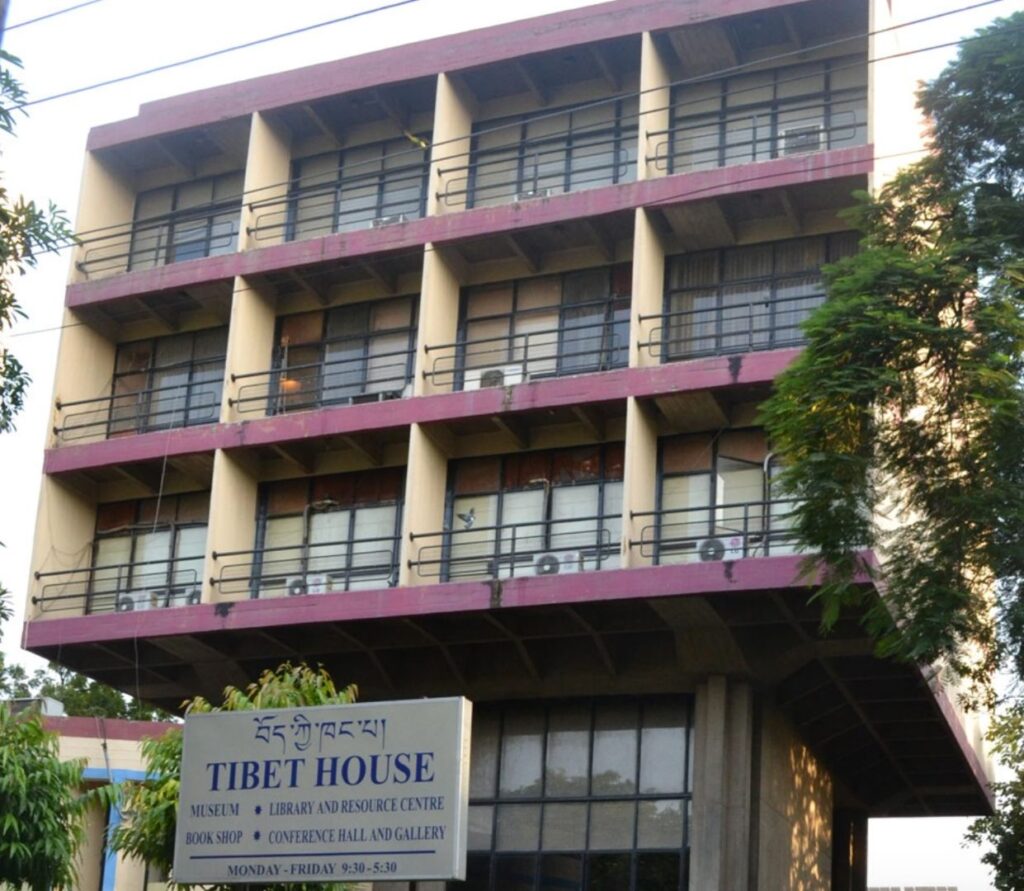
There is a museum, gallery, and library and the collection includes valuable art, artifacts, manuscripts and books, including rare manuscripts and 15th century thankas (painted scrolls). Donations to the collection came in from private collectors worldwide and many Tibetan refugees donated family heirlooms.
The Dalai Lama has lived in Dharmashala, northern India since 1959, where his government in exile is established. Today, there are about 75,000 Tibetans living in India. Delhi’s Little Tibet, Majnu Ka Tilla (officially called New Aruna Nagar) has about 3,500 second generation refugees.
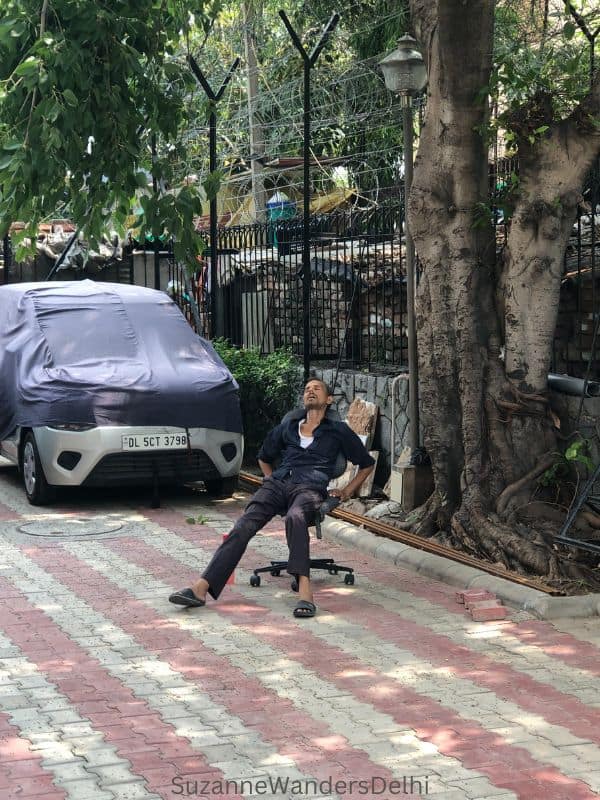
This must be one of the most off the beaten path sites in Delhi, because the security guard was sound asleep in a chair in the middle of the driveway when I visited.
Legal Status of Tibetans in India
Tibetans are not officially recognized as refugees in India, but as foreigners. This limits their access to government jobs, freedom of movement domestically and abroad and prohibits them from owning property in India. In 2016, the Delhi High Court ruled that Tibetans born in India between 1950 and 1987 are eligible for Indian passports but since India does not allow dual citizenship, many Tibetans are reluctant to apply and give up part of their Tibetan identity.
If you are interested in Buddhist relics, Delhi’s National Museum has a collection of bone fragments of the Buddha that were discovered in 1970.
- Hours & Cost: 9:30 am – 4:00 pm, daily (closed between 1:00 – 2:00 pm), Monday to Friday; INR 10
- Nearest metro station: Jawaharlal Nehru Stadium aka JLN Stadium (Violet line), exit Gate 5
- What to see nearby: Lodhi Garden, Lodhi Art District, India Habitat Centre
- Where to eat: Jamun, Habitat Hub or Habiteria (both at India Habitat Centre)
16. India Habitat Centre
India Habitat Centre is an arts conference centre that promotes new ideas in art while highlighting Indian artists. The centre is membership based but the public are welcome to view the galleries, enjoy the open spaces and attend performances, making it one of the best off the beaten path sites in Delhi.
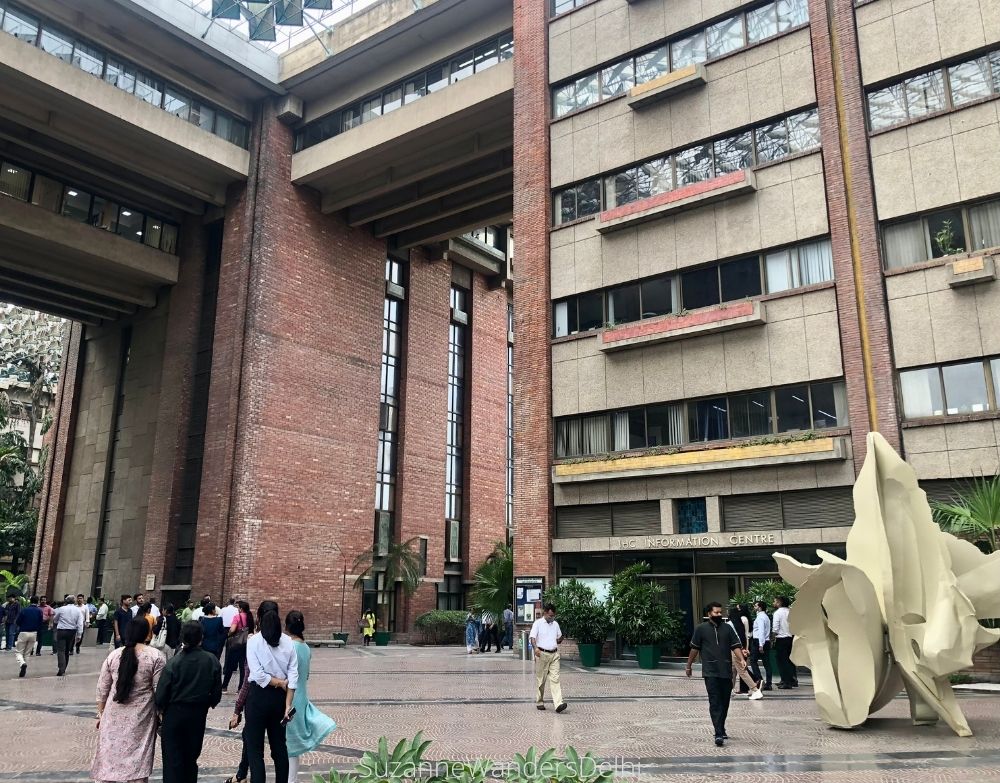
If you are hoping to see a culturally authentic, live arts show while in Delhi, this is the place. They host a busy schedule of theatre, music and dance performances. You can check the calendar of events on the India Habitat Centre website.
Free Exhibitions
The centre has two excellent galleries, the Visual Art Gallery and Open Palm Court Gallery, both which feature specially curated exhibitions of paintings, sculptures, graphic arts and photography.
There is a dedicated sculpture park and the centre regularly displays public art in its outdoor spaces. Plays, discussions, book reviews and movie screenings often take place in the amphitheatre or Joseph Stein Auditorium (one of the best auditoriums in India).
They have a good retro diner called Habitat Hub that is open all day until midnight. It’s a really nice way to spend a few hours, especially if there is a performance going on. The centre’s commitment to promoting established and up and coming Indian artists is impressive.
- Hours & Cost: 10:00 am – 8:00 pm, daily (closed Monday); free
- Nearest metro station: Jawaharlal Nehru Stadium aka JLN Stadium (Violet line), exit Gate 5
- What to see nearby: Lodhi Garden, Safdarjung Tomb, Lodhi Art District
- Where to eat: Habitat Hub or Habiteria (in India Habitat Centre)
17. Nicholson Cemetery
If you are interested in the history of the British in India or historic cemeteries you will love this place. It holds 2,400 graves dating back to 1857, including that of its namesake, the British war hero John Nicholson.
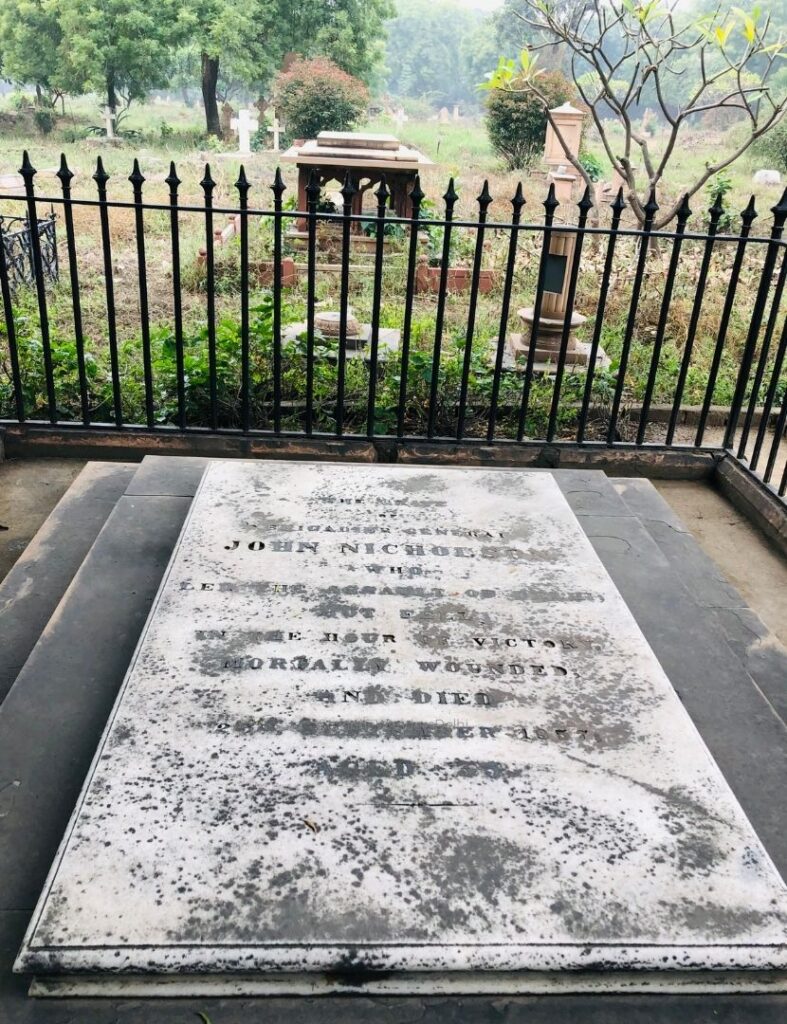
The cemetery is in near shambles, almost completely overrun with vegetation but you can still make out and read many of the gravestones. It’s definitely one of the most off the beaten path sites in Delhi.
Nicholson was an infamous Brigadier General in the British Army. He was instrumental in defeating the Indians during the revolts in 1857 and was mortally wounded during the battle for Kashmere Gate. Regarded as a hero by the British but reviled by Indians, he is a controversial figure.
His grave is the only one with a protective iron fence, but when I visited the caretaker had unceremoniously draped his laundry over it to dry. Nicholson’s grave is easy to locate. It is to the right after you enter the cemetery, near the caretaker’s quarters.
The cemetery is over 8 acres and most of it contains the graves of British soldiers and civilians, though there is a section for Christian Indians. Many of the dead were killed during the 1857 War of Independence (as India refers to it) or the Mutiny (as British history refers to it).
A Controversial Restoration
This is the oldest Christian cemetery in Delhi and given its historic nature there have been discussions from time to time regarding its protection and restoration.
A detailed study was done by the British Association for Cemeteries in South Asia resulting in a pilot project which restored a handful of graves. But even this small project created controversy and many locals were not happy.
The cemetery is seen as a bitter reminder to Indians of their defeat and colonization by the British, so any funding for a restoration project would have to come from the British community outside of India. Due to lack of funds the project has been dropped for now, though some graves have been relocated to the Delhi War Cemetery at the request of surviving family members.
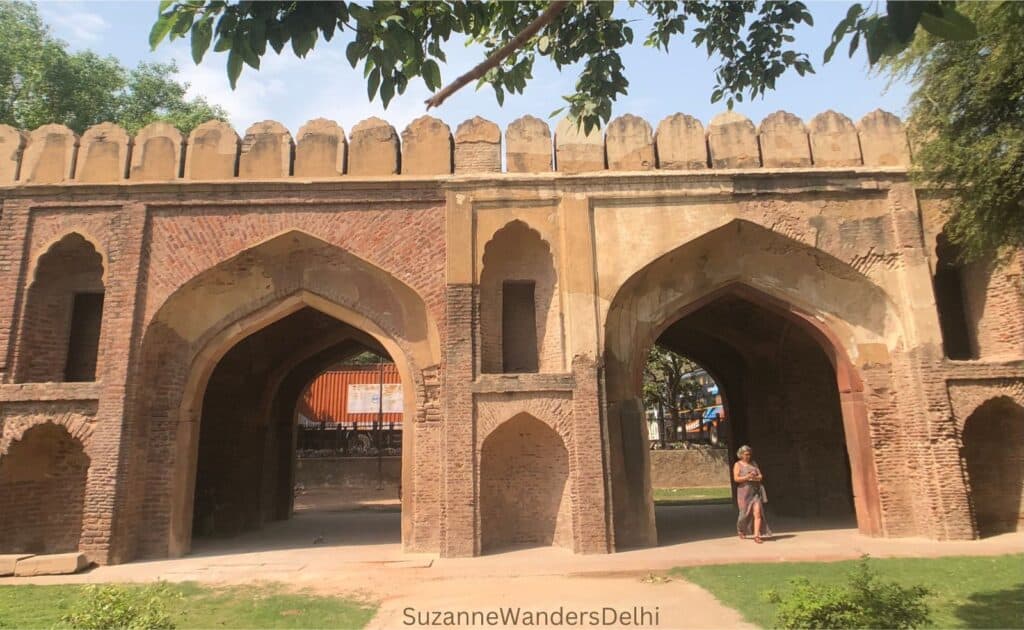
- Hours & Cost: 8:00 am – 6:00 pm (summer) & 9:00 am – 5:00 pm (winter), daily; free
- Nearest metro station: Kashmere Gate (Violet, Red or Yellow line), exit Gate 4
- What to see nearby: Kashmiri Gate, Qudsia Bagh, Partition Museum
- Where to eat: Sri Hari Sharnam Hotel & Restaurant
18. Qudsia Bagh
Qudsia Bagh (garden) is a beautiful oasis built for a queen, amid one of the most congested and busy parts of Delhi. Although it is a shadow of what it once was, it is still magnificent and has large gardens, walking paths and lovely ruins. It’s one of the most hidden off the beaten path sites in Delhi.
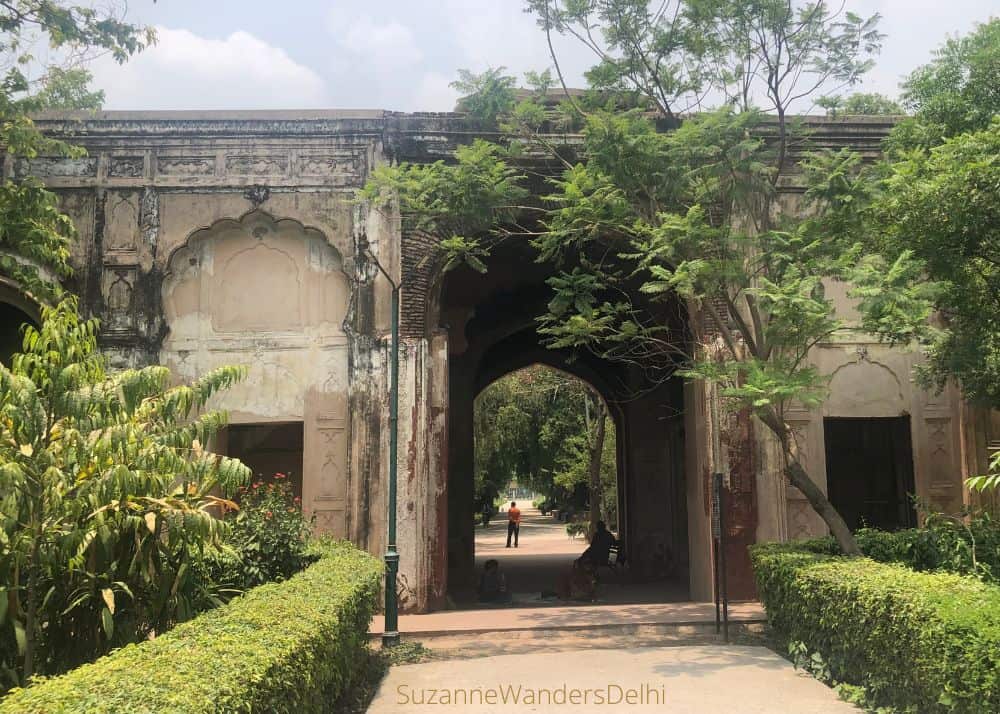
It’s amazing to find this kind of quiet green space in possibly the noisiest and least attractive part of Delhi.
It was built in 1748 for Qudsia Begum, the third wife of Mughal ruler Muhammad Shah Rangeela. It once had a magnificent palace, mosque and gardens filled with waterfalls and fruit orchards spread over 60 acres.
From Courtesan to Regent
The Begum was originally a courtesan in the royal court and caught the eye of Emperor Muhammad Shah Rangeela, who made her his third wife. During her husband’s reign, she was made a mansabdar, a high ranking administrative position in the army.
After the Emperor’s death she acted as regent for their son who was too young to assume his duties as ruler. She ruled as regent between 1748 – 1754. It was during this time she had the Qudsia Bagh built. She was later imprisoned and died in 1765.
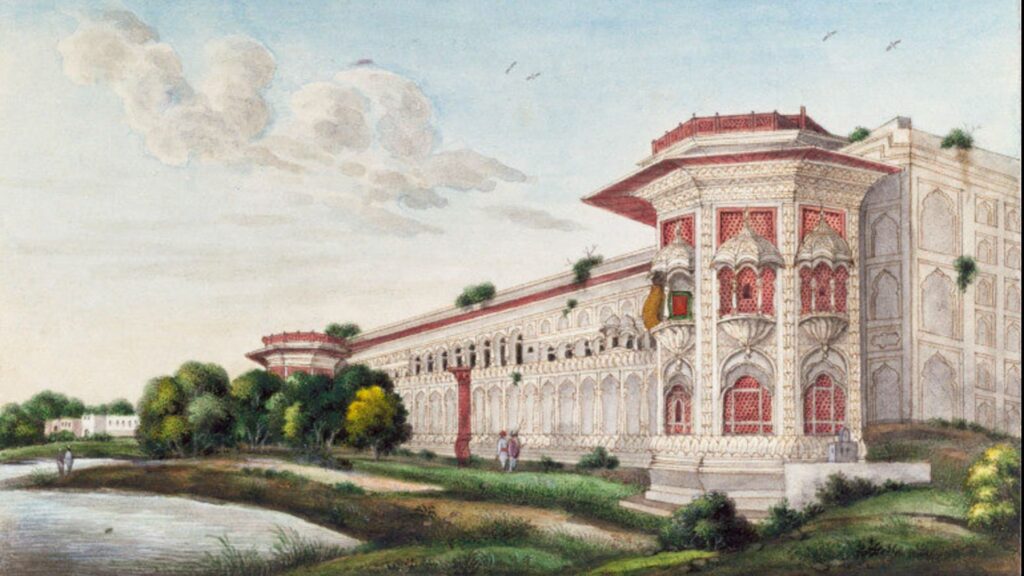
To protect the Begum from anyone seeing her, the Qudsia Bagh was built with very high perimeter walls. During the revolts of 1857 British soldiers and families living near Kashmere Gate took refuge in Qudsia Bagh because of these high walls.
Most of the buildings in Qudsia Bagh were destroyed during the rebellion in 1857 but parts of the Shahi Masjid (Royal Mosque), the Hathi Darwaza (Elephant Gate) and two other pavilions survived. Some of the plaster work and elements that were popular in Mughal architecture like floral carved arches and niches are still visible.
- Hours & Cost: 24/7 but go during the day; free
- Nearest metro station: Kashmere Gate (Violet, Red or Yellow line), exit Gate 5
- What to see nearby: Monastery Market, Ladakh Buddhist Vihara, Nicholson Cemetery
- Where to eat: The Garden Terrace Restaurant, Open Air Ladakh Restaurant
19. Ice Skating in Delhi
Most people don’t think of ice skating as something to do in Delhi but it’s a great way to keep cool in a city that reaches 45°C in the summer.

Don’t worry if you didn’t bring your ice skates, skate rental is included with the ticket price. But bring your own socks. There are two indoor rinks in Delhi, both located in large malls in the suburbs of the city.
iSkate in Ambience Mall, Gurugram
This is my preferred place to skate, the rink is the largest of the two options and they have a decent cafe, Roasted. The skating sessions are 45 minutes and start on the hour. Ice marshals start by demonstrating how to stop, start and fall and then everyone ventures onto the ice. The clientele is mostly local, and for most it’s their first time on ice.
iSkate hosts hockey games and figure skating; if you are interested in either you can inquire at reception or ask one of the ice marshals. There is also a snow room and storm room.
- Hours & Cost: 12:00 am – 10:00 pm, daily; INR 600
- Nearest metro station: Moulsari Avenue (Rapid line)
- What to see nearby: PVR Cinema (check movie listings on the PVR website), Museo Camera
- Where to eat: Roasted (at iSkate), PAUL, Harajuku Tokyo Cafe (both at Ambience Mall Gurugram)
Snow World in DLF Mall of India, Noida
As well as an ice skating rink, Snow World has a snow park with tobogganing, bob sledding and an igloo. They supply the snow wear and ice skates though I doubt they clean the attire between each user.
If you’re just looking for ice skating, this rink is smaller than the one at iSkate and not as well maintained, but if you want to do the other snow activities Snow World is better.
- Hours & Cost: 11:00 am – 9:30 pm, daily (closed Monday); INR 1000
- Nearest metro station: Noida Sector 18 (Blue line), exit Gate 1
- What to see nearby: Okhla Bird Sanctuary, Worlds of Wonder Amusement & Water Park
- Where to eat: Made in Punjab, Burma Burma Restaurant & Tea Room, SodaBottleOpenerWala (all at DLF Mall of India)
👍 Insider tip: Both of these skating rinks are located in two of the biggest and best malls in Delhi. You can easily make a of day of it by seeing a movie, having a meal and doing some shopping. Both malls have a good mix of international and domestic branded shops. Plus they are climate controlled!
20. Sankat Mochan Hanuman Mandir (in Karol Bagh)
If you have taken the metro Blue line you may have seen this temple from the elevated section. It is unmissable, a 108 foot high orange statue of Lord Hanuman, the Hindu monkey god. The statue has become a symbol of Delhi – one of those iconic sites that immediately identifies the city. And it is just as unique and interesting up close too.
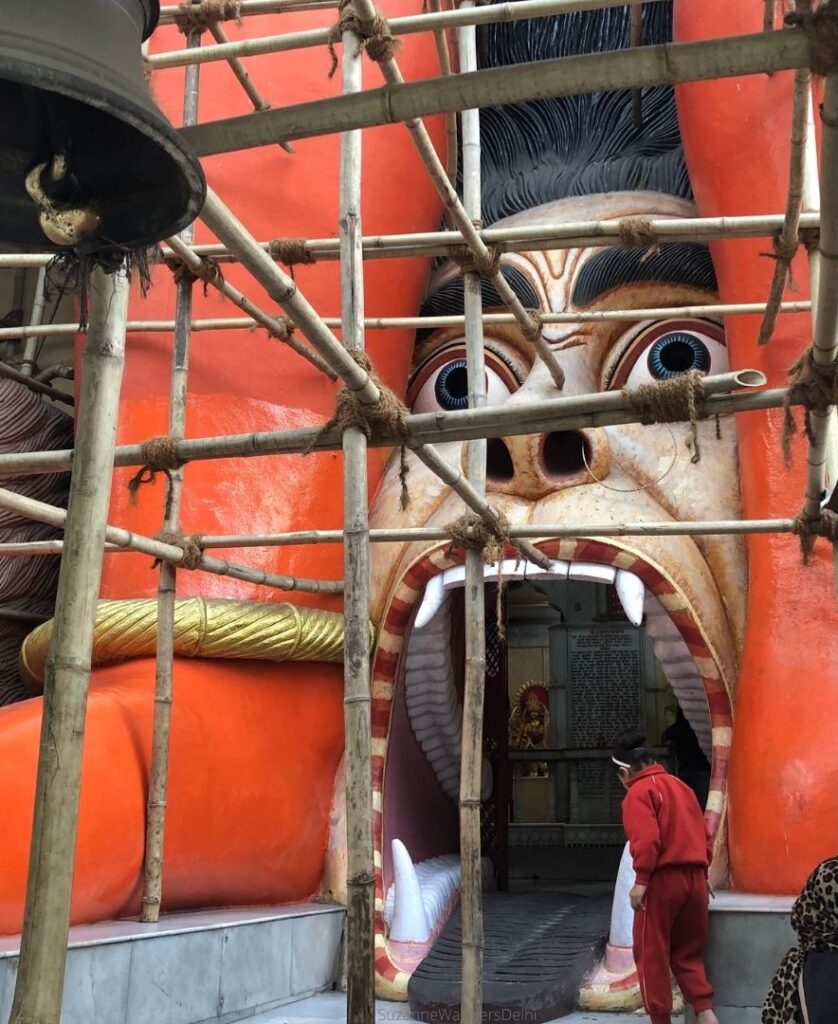
The temple is several stories high and each level contains shrines dedicated to various Hindu deities such as Parvati, Lord Ram, Krishna and Ganesha.
When visiting you will be encouraged to visit each shrine and receive a blessing from each priest. Small donations are customary; it’s a good idea to have some INR 50 and 100 notes ready.
The temple was the project of Mahant Nagababa Sevagir Maharaj (Babaji), who decided to build the temple after having a vision of Lord Hanuman. Construction began in 1994 and finished in 2007, being built in stages and funded by donations.
Illegal Location
In 2018 officials considered air lifting the famous statue to a different location. Construction of the temple was never properly authorized and in 2018 local authorities were trying to tackle the issue of encroachment in the area. All local government bodies denied responsibility for the temple and for now it will stay where it is.
Hanuman is a central character in the Ramayana, one of the great Indian epic poems that has deeply influenced Hinduism in India. In the Ramayana, Hanuman rescues the kidnapped Sita from the evil Ravana and returns her to Lord Rama. Because of this Hanuman represents loyalty, fearlessness and strength.
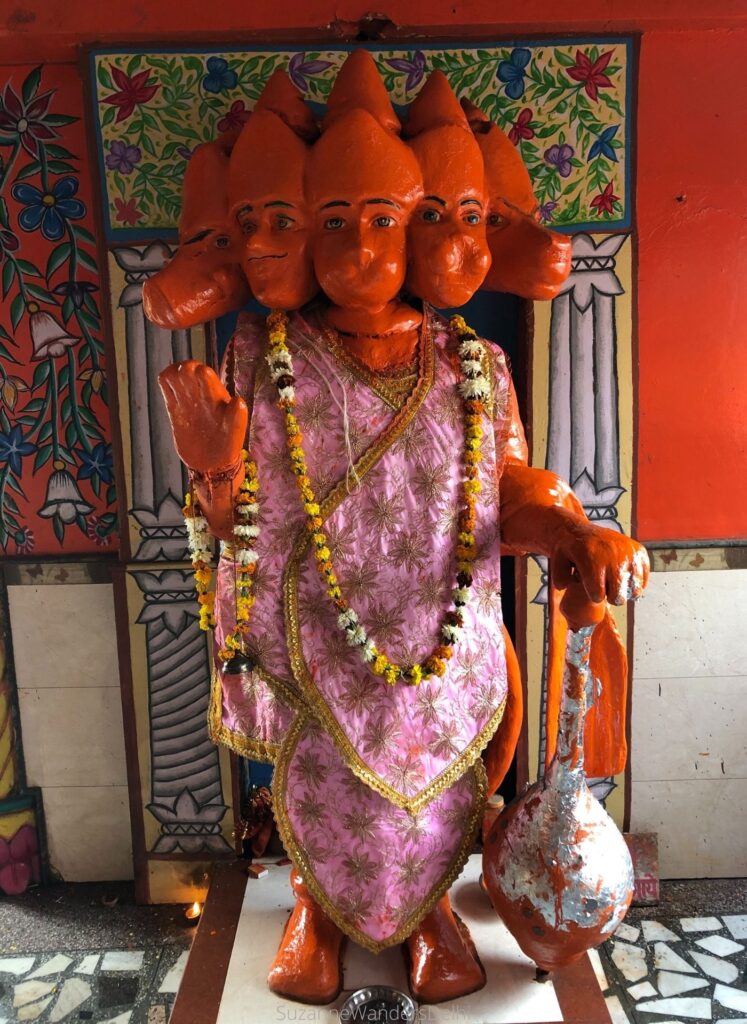
On Tuesday and Saturday at 8:15 am and 8:15 pm the giant statue of Hanuman opens his chest to reveal Lord Rama and Sita in his heart. It is quite a spectacle that attracts a crowd.
To enter the temple you must remove your shoes; there is rack with a shoe watcher (he will expect a small tip). Females should not touch the image of Hanuman because he is considered celibate and unmarried.
- Hours & Cost: 6:00 am – 10:00 pm, daily; free
- Nearest metro station: Jhandewalan (Blue line), exit Gate 3
- What to see nearby: Bhuli Bhatiyari Ka Mahal, Laxminarayan Mandir, Karol Bagh Market
- Where to eat: Roshan di Kulfi, Haldiram’s
21. Dastkar Nature Bazaar
Dastkar Nature Bazaar is a wonderful outdoor market featuring a diverse range of handmade, handwoven, organic, herbal and recycled products. Everything is made using traditional methods.

Dastkar has exhibitors all the time, but every month there is a two week themed fair featuring craft demonstrations, workshops, cultural performances and a variety of regional meals and snacks at the food stalls. Check the Dastkar Nature Bazaar website for events.
The bazaar is a joint initiative between NGO Dastkar and Delhi Tourism which provides a place for artisans from around India to showcase and sell their handicrafts. It’s definitely one of the off the beaten path sites in Delhi, but many locals prefer Dastkar Nature Bazaar to the more commercial Dilli Haat INA.
Dastkar’s goal is to support crafts people by giving them opportunities to upgrade their skills, develop products for today’s consumer and have access to wholesale buyers and the retail market. Dastkar Nature Bazaar is a market with a social conscience.
Dastkar has had great success keeping artisan traditions alive when many villagers have had to leave for jobs in urban areas or switch to farming. By supporting artisans through education and market access they have managed to protect regional handicraft traditions.
Their aim is to empower artisans to be completely self sufficient so the need for further support is redundant. Dastkar then moves on to the next community.
- Hours & Cost: 11:00 am – 7:00 pm, daily (closed Wednesday, but open every day during fairs); INR 40
- Nearest metro station: Chhattarpur (Yellow line), exit Gate 2
- What to see nearby: Cambodian Monastery of New Delhi, Shri Aadya Katyayani Shaktipith Mandir, Dhan Mill Compound
- Where to eat: food court at Dastkar Nature Bazaar, Cafe Dori
👍 Insider tip: While visiting Dastkar Nature Bazaar, make sure to take a look at the Cambodian monastery next door. It is the only one like it in Delhi and beautiful.
22. Waste to Wonder Park
One of the most creative off the beaten path sites in Delhi, this ingenious park has to be seen to be believed. Miniature replicas of the 7 wonders of the world and a whole dinosaur section have been made entirely of scrap material. Metal waste like automobile parts, old fans, rods, iron sheets, bicycle parts, metal railings, defunct sewer lines and old appliances have transformed into beautiful miniatures of iconic landmarks.
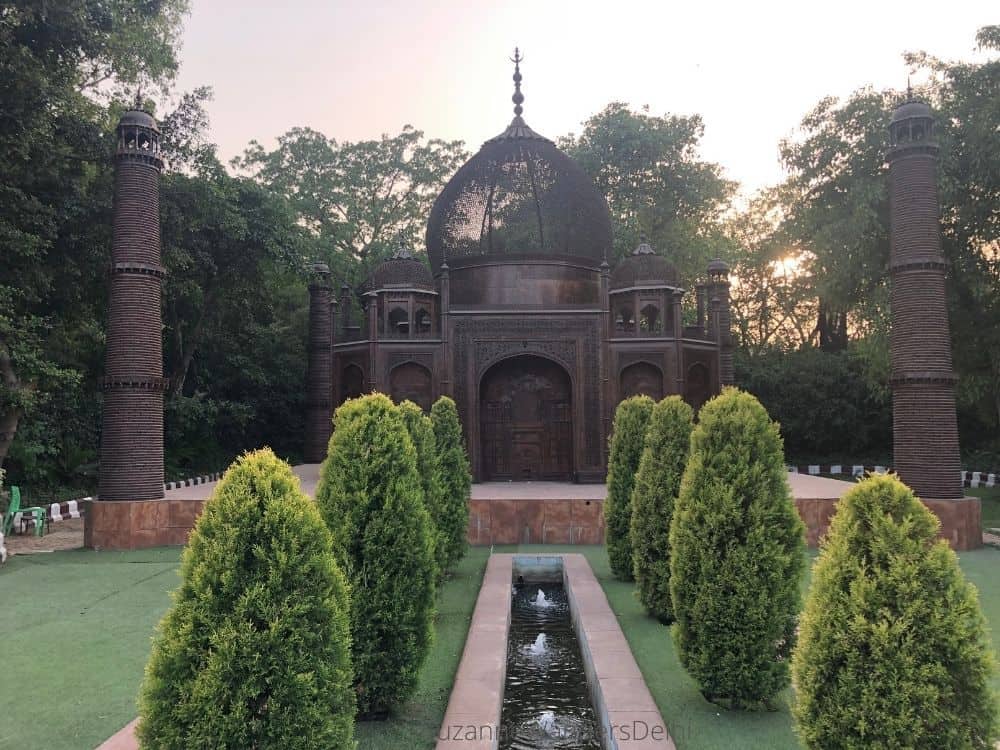
It is the first park of its kind in the world; the only one to use 100% recycled material.
In keeping with the environmental message, the park generates its own solar and wind energy to meet all its energy needs. Even the washrooms are built from old shipping containers. The municipal government constructed the park in just 6 months, opening in 2019. 70 welders and 12 artists designed and built the replicas.
This is a great place for kids with a play area, a mini train, a new Jurassic Park section, water station (water may not be filtered), and a food court in the park. It’s a very pretty sight in the evenings when the replicas are lit up.
- Hours & Cost: 11:00 am – 11:00 pm, daily (closed Monday); INR 50 adults, INR 25 children 3-12, children under 3 and adults over 65 free (admission is double on Sunday)
- Nearest metro station: Sarai Kale Khan Nizamuddin (Pink line), exit Gate 3
- What to see nearby: Humayun’s Tomb (UNESCO), Sunder Nursery, Hazrat Nizamuddin Dargah
- Where to eat: food court at the park, Carnatic Cafe (at Sunder Nursery – there is an entrance fee)
23. Sarojini Nagar Market
Sarojini Nagar is one of Delhi’s most popular and best markets for budget shopping. There is a huge selection of clothing, footwear, accessories and home decor items.
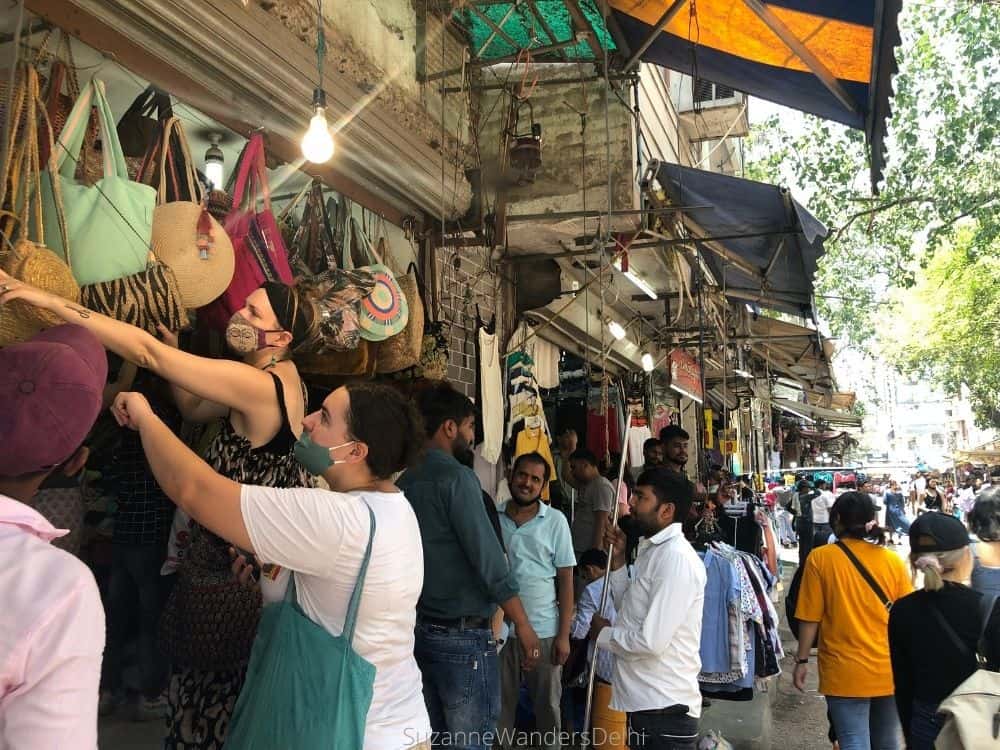
If you are good at bargaining and don’t mind the lack of change rooms in most shops, you will come away with some fantastic deals.
While there is some men’s clothing, ladies fashion dominates this market. I always bring my Canadian friends here and they go crazy. It’s hard to convince them to leave.
Bargain Hard!
The market gets a lot of branded clothing that either has small defects or is excess stock, as well knock off items. Unless there is a sign which states prices are fixed, you are expected to bargain.
As a general rule of thumb, you should start at 50% less than the marked price. I have bought shirts for as low as INR 100, and jeans for INR 300; the deals on just about everything are incredible. Bring a big bag for your purchases and wear comfortable shoes. To avoid the worst of the crowds, avoid Sundays. And wash your clothing purchases before wearing.
At one of the far corners of the market there is a fabulous fresh produce market. It is a couple of lanes behind HDFC Bank. You can ask someone to point you in the right direction by asking for the “subzi” (vegetable) market.
There’s also a small and very old Hanuman temple in the market. It’s quite common to visit the temple for a blessing and then commence shopping. It’s just off Lane D, which is the street you cross to get into the market from the metro station.
Sarojini Nagar is officially closed on Monday. However, when the shops are closed on Monday, many street vendors come out to take advantage of the reduced competition. On these days you can get some really fantastic deals. I wouldn’t make a special trip to Sarojini Nagar on Monday just for the extra budget prices because so much of the market is closed, but if you happen to be in the vicinity it would be worth a look.
- Hours & Cost: 10:00 am – 11:00 pm, daily (closed Monday); free
- Nearest metro station: Sarojini Nagar (Pink line), exit Gate 1
- What to see nearby: Matka Market, Dilli Haat INA, Nehru Park
- Where to eat: Mahendra Sweet House & Bakers, Haldiram’s
24. Shri Digambar Jain Lal Mandir & Bird Hospital
The red sandstone spires of Delhi’s oldest Jain temple are immediately recognizable and have become part of the iconic skyline of Old Delhi. Built in 1656 during the time of Mughal ruler Shah Jahan, the temple has become an important place of worship for Jains from the entire capital region.
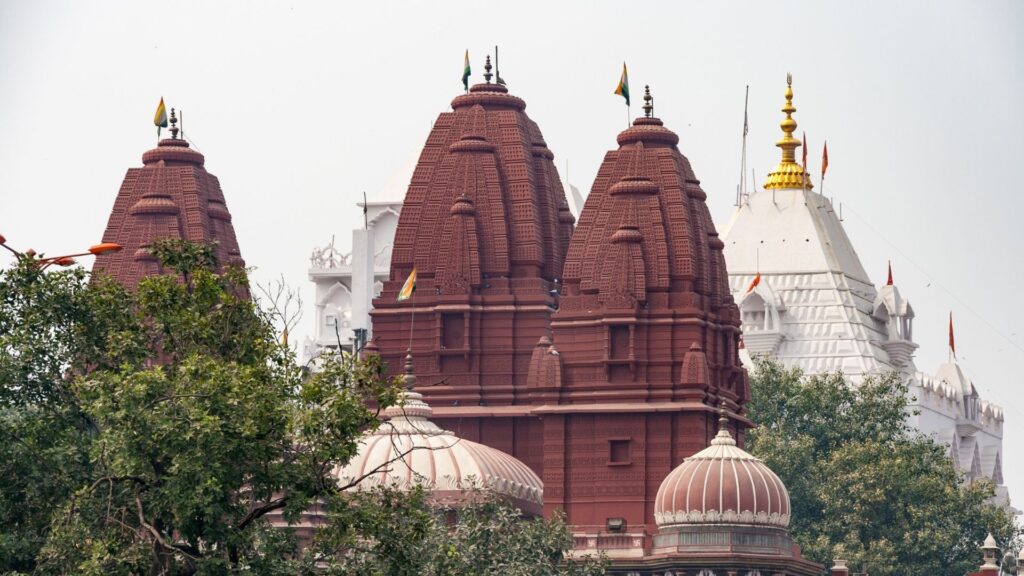
The temple has several beautiful shrines, a library and a bird hospital.
Jainism is an ancient Indian religion that believes the path to enlightenment is through non-violence to all living things. Jains are strict vegetarians and do not even eat root vegetables since removing the root kills the plant.
Jain monks and nuns usually wear a mask to avoid breathing in any living organism, and as they walk they sweep the ground in front of them to avoid stepping on any living thing, even an ant. Jains believe in karma and re-incarnation.
Under Shah Jahan’s rule, a large number of Jains were allowed to live in Shahjahanabad (now Old Delhi) and he gave them land around Chandni Chowk. At that time a Jain officer in Shah Jahan’s army kept a statue of a Jain deity in his tent for worship. Other Jain officers started to worship at the tent and Shah Jahan granted permission for a temple to be built on the site.
Legend of the Mysterious Music
Legend has it that ruler Aurangzeb (the son and successor of Shah Jahan) did not like music and banned all instruments from the temple. Miraculously the sound of drums could still be heard, even though inspections by his army did not uncover any. Aurangzeb visited the temple himself to witness the miracle and as a result lifted the ban.
When visiting the temple you must remove your shoes and any leather item. You can leave them outside with the shoe watcher who will expect a small tip. There is no photography inside the temple.
Charity Bird Hospital
This unique hospital was started in 1929 by the Jain saint, Maharah Ji. It treats 15,000 birds every year and about 50-60 birds are admitted daily.
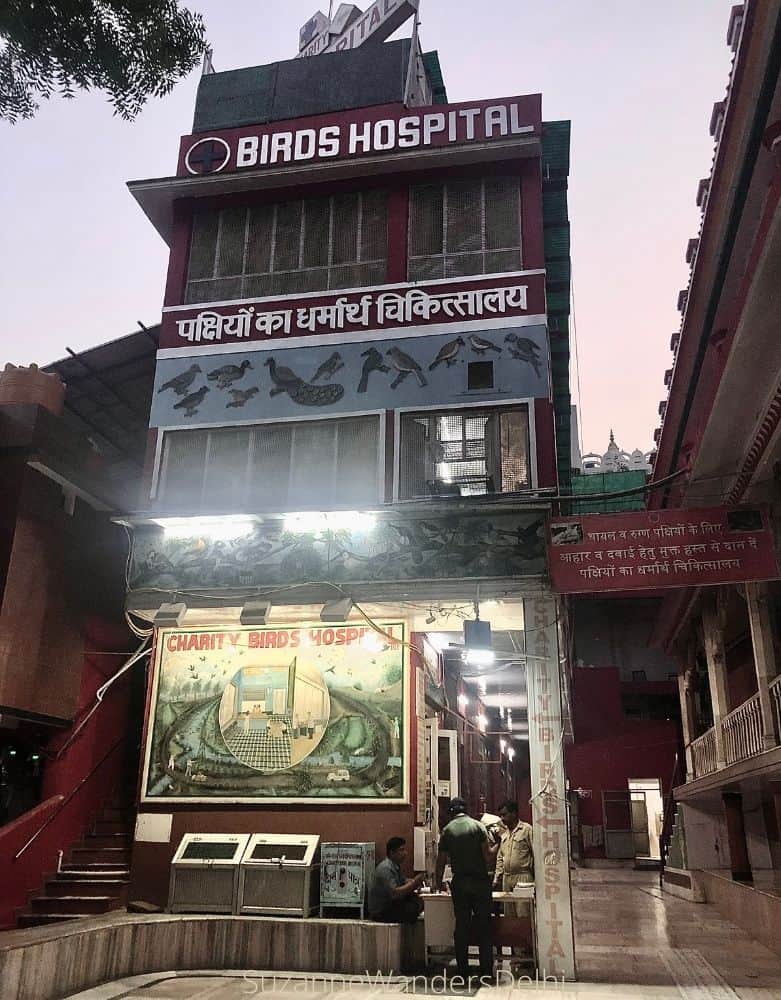
Any person can bring a bird in for treatment, completely free of charge. If you ever find an injured bird in Delhi, this is where to bring it.
The hospital runs entirely on the help of volunteers and is funded by donations, mostly from the Jain community. In keeping with Jain beliefs, the birds are fed a vegetarian diet of seeds and vegetables. They are treated, bathed and set free. The hospital also treats squirrels.
The hospital is several stories high and located just behind the temple, on the temple grounds. It is open for visitors 8:00 am – 8:00 pm. You can look around yourself if you ask permission, or a volunteer may be available to show you around. A donation might be requested.
Just a note of caution, shoes must be removed and there may be bird droppings on the floor.
- Hours & Cost: 5:30 am – 11:30 am and 6:00 pm – 9:30 pm (summer) & 6:00 am – 12:00 pm and 5:30 pm – 9:00 pm (winter), daily; free
- Nearest metro station: Lal Quila (Violet line), exit Gate 1 or 4
- What to see nearby: Chandni Chowk, Red Fort (UNESCO), Gurudwara Sis Ganj Sahib
- Where to eat: Kake di Hatti, Kanwarji Raj Kumar
26. Kushti Wrestling in Urdu Park
Every Sunday afternoon at 4:00 pm in Urdu Park, spectators crowd around to watch traditional Indian wrestling, called kushti. It is an unofficial boys club with the crowd overwhelmingly male, and one of the more unusual off the beaten path sites in Delhi.
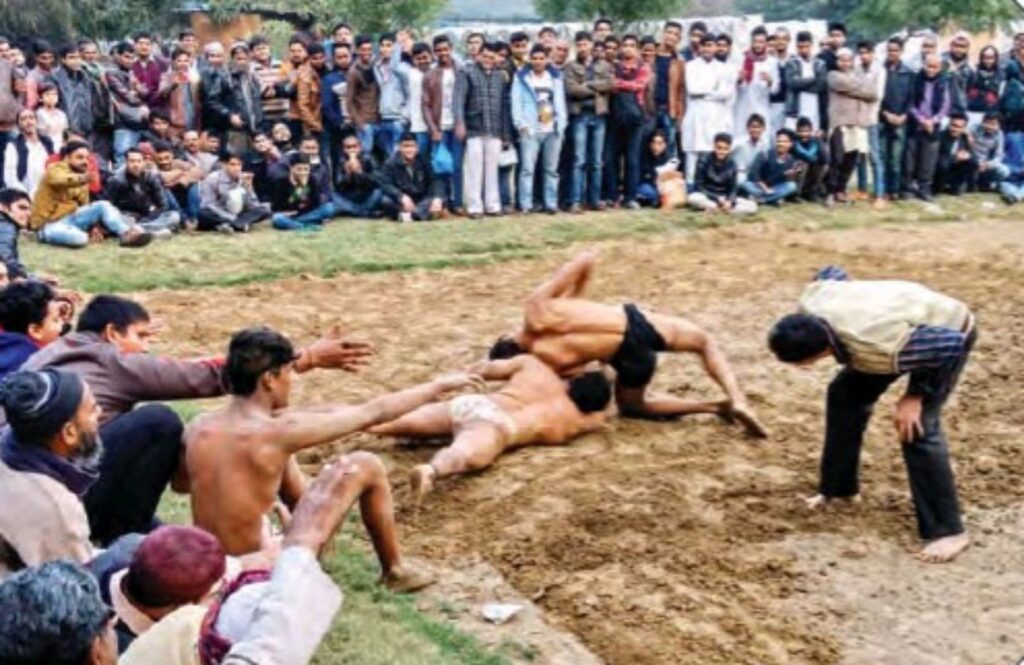
The matches are friendly between competing wrestling clubs but there are cash awards.
Kushti wrestling is a very old tradition that goes back to Mughal times. Wrestling has been in South Asia since the 5th century BC, but it didn’t come to India until the Mughals brought it with them and has evolved into the kushti that is practiced today.
Life of a Kushti Wrestler
More than a sport, kushti is considered a martial art and a way of life that requires immense discipline. Kushti wrestlers live and train in centres called akharas. They follow a demanding training schedule from sunrise to early evening daily and are supervised by a guru. They are responsible for the upkeep and chores in the akhara; even their diet is carefully supervised.
The most serious of the pehlwan (kushti wrestlers) are celibate and abstain from alcohol and tobacco.
Besides the Sunday afternoon kushti matches, Urdu Park is well known for its ustads (experts). These experts provide services like ear cleaning, body massage and champi (head massage). The ustads are considered specialists in their profession, and while a massage in Urdu Park is not exactly a 5 star experience, your body will feel like it had a 5 star massage.
As a female, I would stick to champi or (if you’re really brave) ear cleaning. India is quite conservative, especially in public spaces, and Old Delhi is not exactly progressive.
- Hours & Cost: 4:00 pm Sunday only (kushti wrestling) Urdu Park is only sunrise to sunset daily; free
- Nearest metro station: Jama Masjid (Violet line), exit Gate 2
- What to see nearby: Chor Bazaar, Daryaganj Sunday Book Market, Kathika Cultural Centre
- Where to eat: Qureshi Kabab Corner, Ebony Cafe, Karim’s
27. Champa Gali
Champa Gali is a quirky lane in South Delhi’s urban village of Saidulajab that has become one of the top hang out places in the city. This little area is a quiet interlude in busy Delhi and a favourite meeting place for friends who enjoy its rural, laid back vibe.
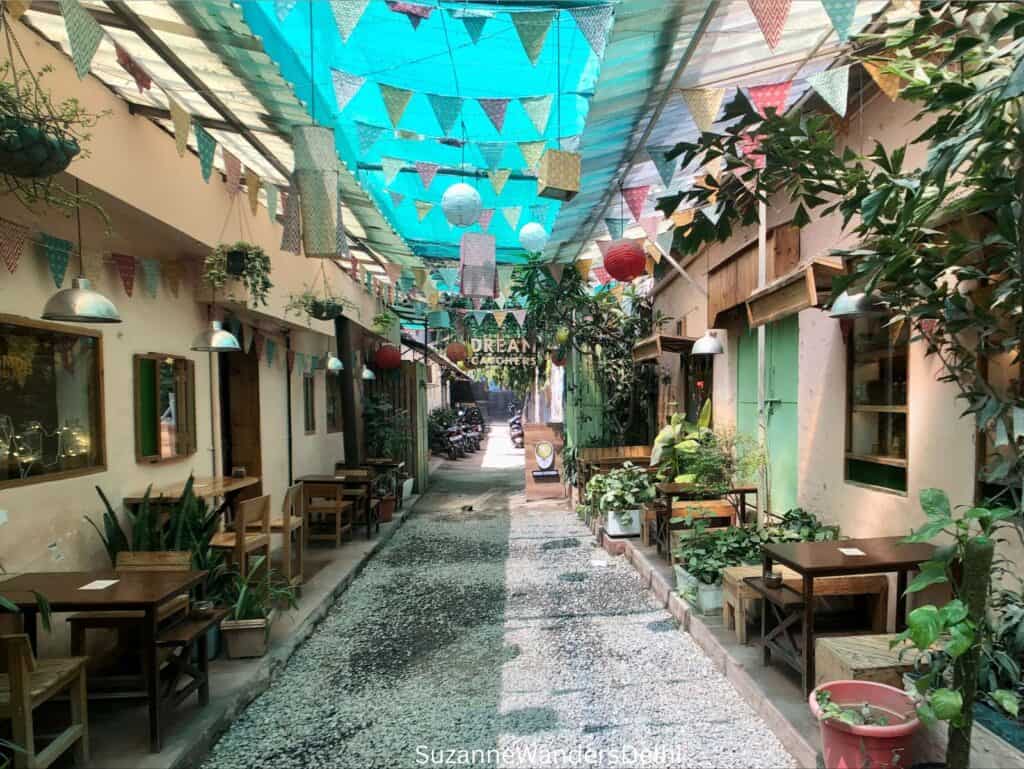
Between the cafes, one of a kind shops, design studios and photogenic lanes, it makes a welcome break.
Until 2013 Champa Gali was just a vacant lot that had been a poultry farm and junkyard with empty cow sheds. Then Jiten Suchede, a designer and carpenter, convinced the owner to sell him a section and turned his vision of Parisian cafe meets local chai shop into the popular cafe Jugmug Thela.
After that came one of Delhi’s best coffee shops, Blue Tokai, lining the lane with champa plants (there’s no longer a store location in Champa Gali, but their offices are located there). The rest is practically history.
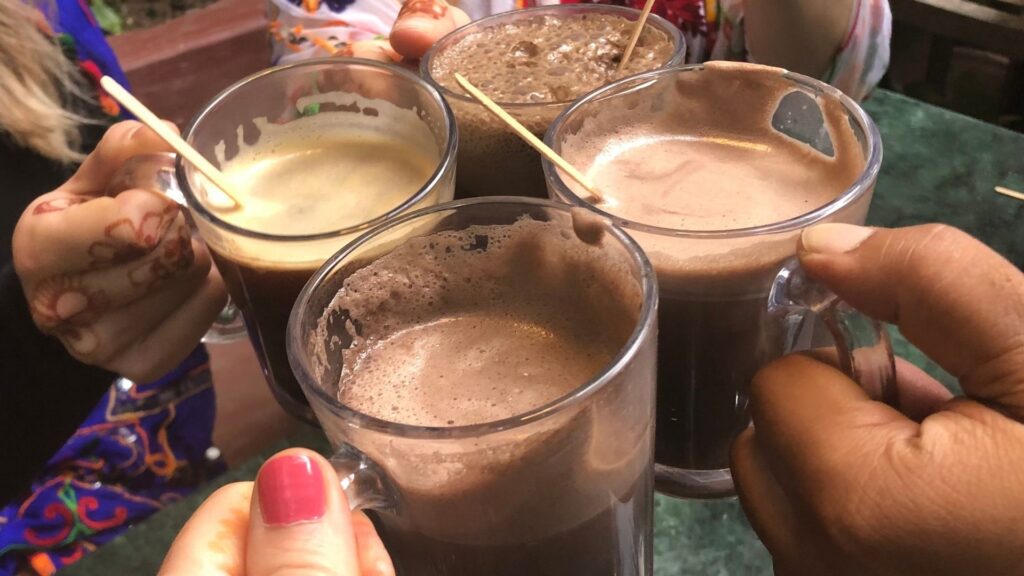
Thanks to social media and the movie Love Aaj Kal which filmed in Champa Gali, the lane shot to fame. It is often referred to as Delhi’s Parisian passageway, and while this may be a stretch of the imagination, Champa Gali definitely has a bohemian feel about it.
- Hours & Cost: 9:00 am – 11:00 pm (hours vary), daily; free
- Nearest metro station: Saket (Yellow line), exit Gate 2
- What to see nearby: Garden of Five Senses
- Where to eat: Jugmug Thela, Rose Cafe
28. Kotla Mubarakpur Complex
The urban village of Kotla Mubarakpur and surrounding area is a treasure trove of forgotten monuments from the Lodhi and Sayyid eras. These monuments are spectacular but almost completely forgotten.

Some are protected in a park like setting among apartment complexes and commercial buildings. Others are in the middle of the urban village, practically swallowed up by surrounding haphazard construction. Locating those requires trekking through a warren of back lanes and alleys; you can use the map below to help.
The tombs may be locked, but for a small tip the watchman or caretaker will usually be happy to unlock them and show you around.
Darya Khan’s Tomb
This Lodhi era tomb used to be in the middle of a busy traffic island, only accessible via a pedestrian overpass. Recently the area was redeveloped for additional housing and the monument was given a park like setting including a jogging track installed for the residents.
The tomb was constructed in the early 16th century using a three-tiered design, which is the only one of this kind in Delhi. There are three domed pavilions and Darya Khan’s white marble tomb lies in the very centre, on an open platform.
Darya Khan Lohani was an important figure during Bahlol Lodhi’s reign and the successive rule of Sikandar Lodhi, serving as chief justice and then court lawyer. Local residents treat Darya Khan as their family saint, and offer sweets and incense at his tomb on Thursday.
Bade and Chote Khan Ka Gumbad
These are a set of two spectacular tombs that barely get a second look, even though they are in relatively good condition and located in a prominent area. Bade Khan Ka Gumbad is the larger of the two. It has three levels of niches and typical Lodhi era octagonal, domed turrets.
Chote Khan Ka Gumbad is the smaller tomb and blue tile work is still visible on the facade. Little is known about the tombs, other than they were built in the 16th century and are probably related in some way.
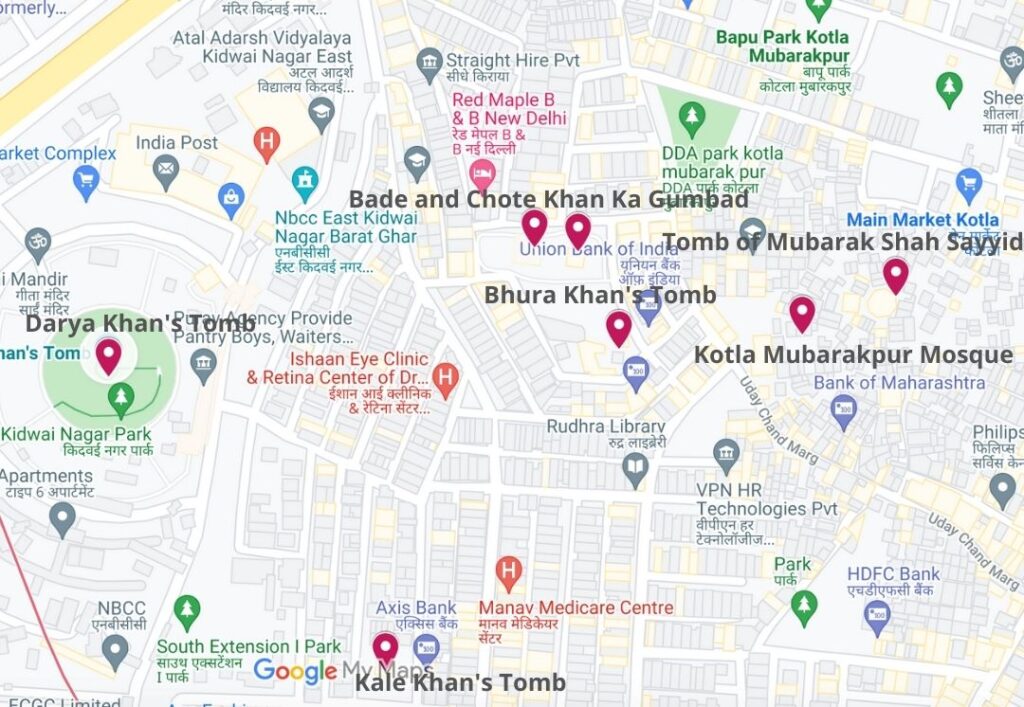
Bhura Khan’s Tomb
Almost nothing is known about this small tomb, but it is only a few metres away from Bade and Chote Khan Ka Gumbad and worth a look.
Kale Khan’s Tomb
The inscription on the mihrab (carved niche facing Mecca) inside the tomb confirms it was built in 1481; it is the earliest of the Lodhi era tombs. It may be the tomb of Mubarak Khan, the father of Darya Khan Lohani, but it not known for sure.
Mubarak Shah Sayyid’s Tomb
Mubarak Shan was the second ruler of the Sayyid dynasty which ruled Delhi 1414 to 1451. He was a successful ruler and fended off many foreign invasions. Mubarakpur is named after him.
His tomb is one of the most off the beaten path sites in Delhi, and unfortunately a classic example of uncontrolled building and encroachment typical in Delhi’s urban villages. At one time the tomb must have been a fantastic site, judging from the architecture. Today, it is difficult to even locate in the jumbled lanes and buildings that have sprung up completely surrounding it. You will have to go down the narrow alleys to find it.
Kotla Mubarakpur Mosque
At one time the Kotla Mubarakpur mosque would have been adjacent to Mubarak Shah Sayyid’s tomb, but today there is a chaotic maze of structures between the two.
Illegal construction has completely encroached upon the mosque, even touching its exterior walls. The courtyard is regularly used as a playground, a place to tie up cows and garbage dump. The mosque is not far from the tomb of Mubarak Shah Sayyid, again through the narrow alleys.
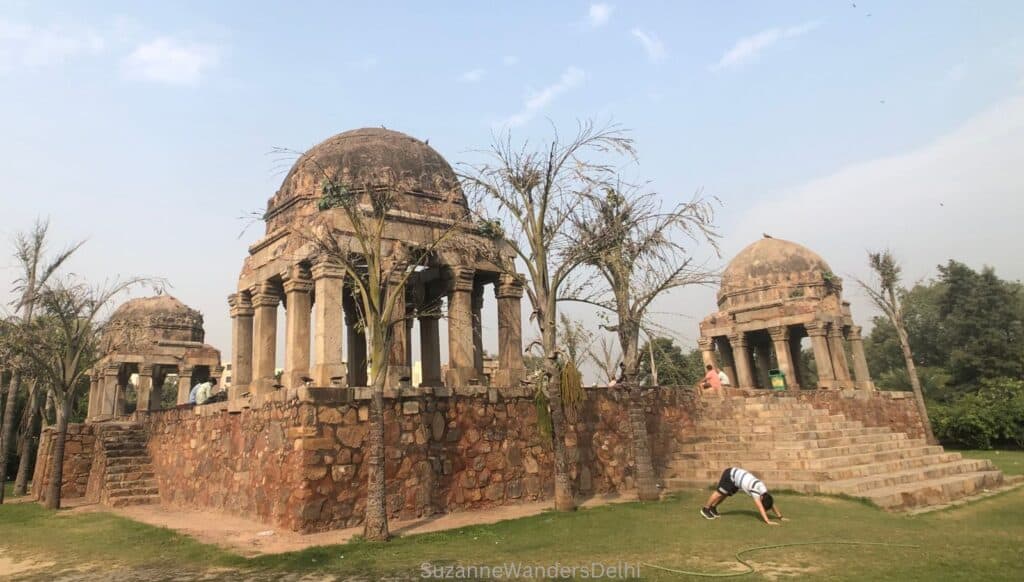
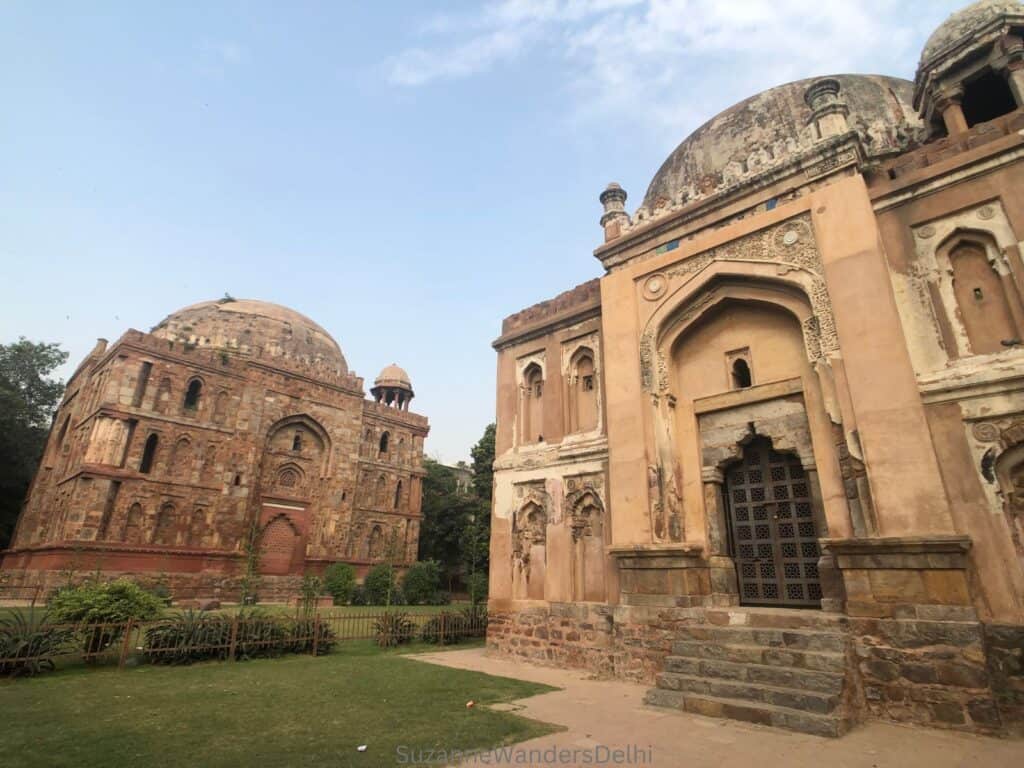
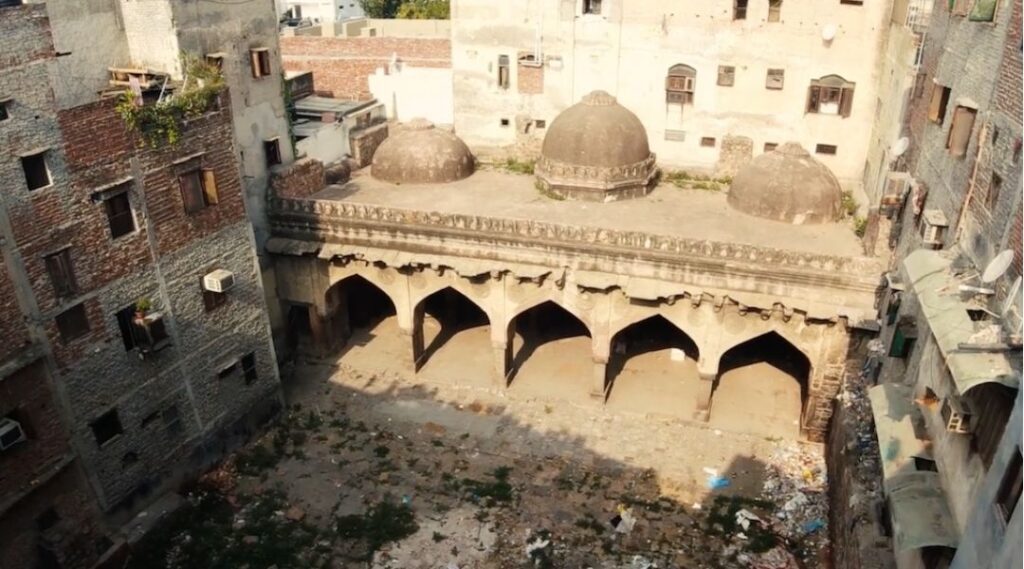
- Hours & Cost: 24/7 but go during the day; free
- Nearest metro station: South Extension (Pink line), exit Gate 1
- What to see nearby: Dilli Haat INA
- Where to eat: Mozzo, Amici Cafe, Sagar Ratna
29. Have Langar at a Gurudwara
Langar is the free, vegetarian meal offered at all Sikh gurudwaras worldwide. Any person regardless of faith, gender, nationality or status is welcome in a Sikh gurudwara and langar hall.
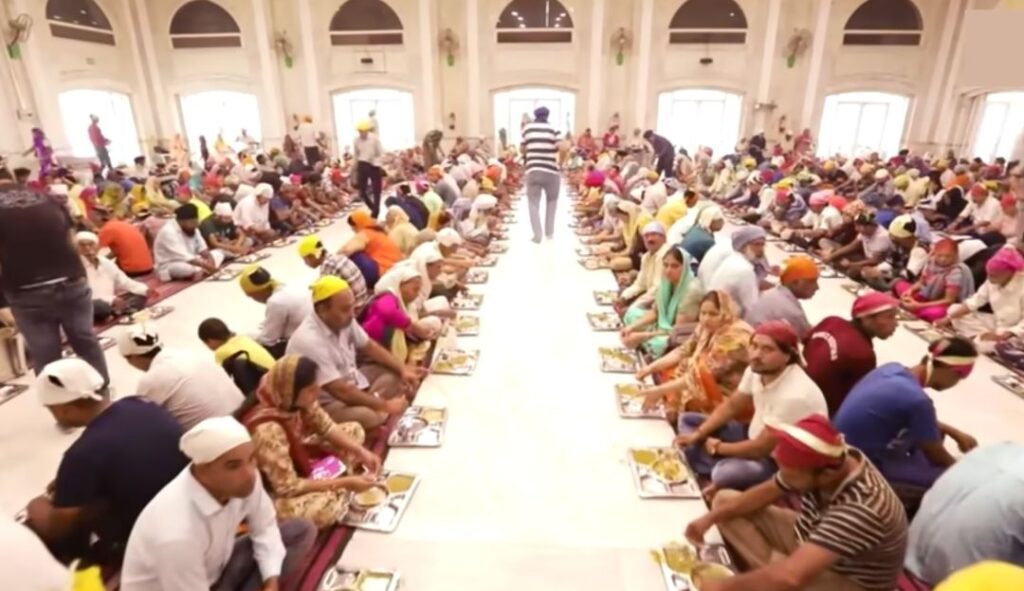
In Delhi, I recommend you have langar at Gurudwara Sis Ganj Sahib (Old Delhi), or Gurudwara Bangla Sahib (near Connaught Place).
Having langar is more than a meal, it is a joyful, community experience. Even if you are not a spiritual person, it is almost impossible to come away not feeling uplifted.
The tradition of langar and service to the community goes back to the religion’s founder, Guru Nanak. He preached that selfless service (called seva) and hard work are as important as prayer.
The Good Samaritans of the World
Sikh temples are not just places of worship, they are shelters, soup kitchens, community centres and places of refuge in times of trouble. Sikhs are often referred to as the good samaritans of the world.
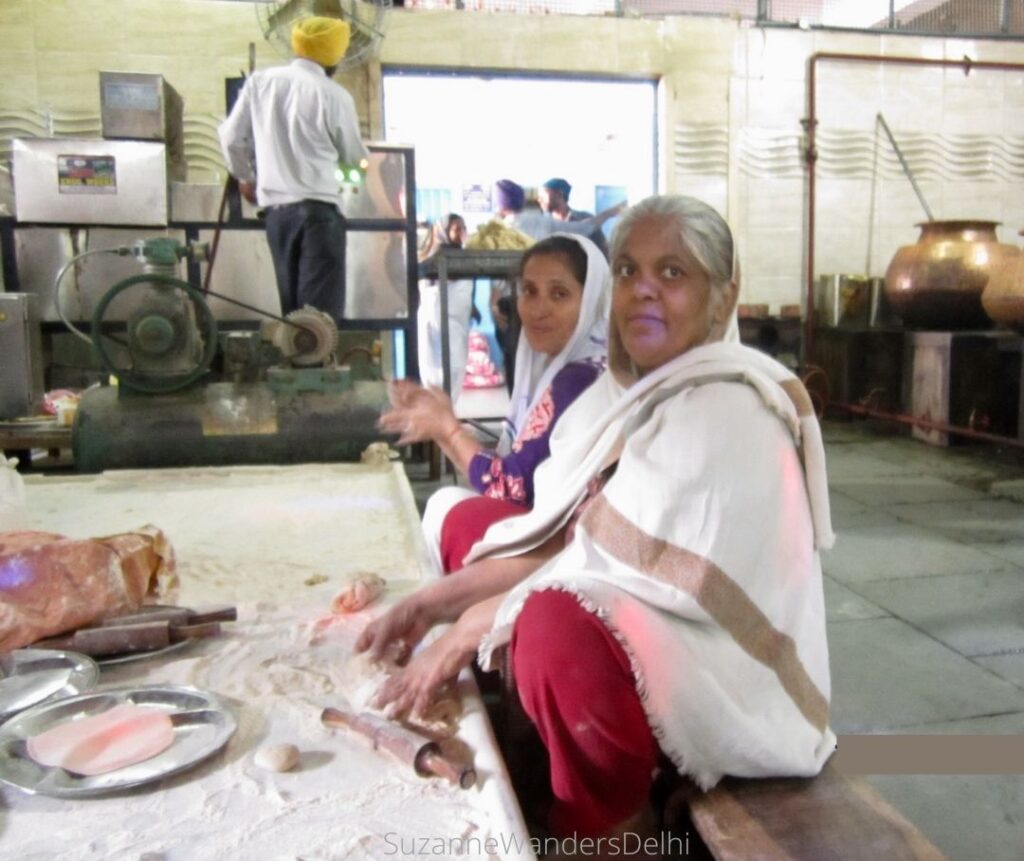
Volunteers from the Sikh community prepare the food in large gurudwara kitchens. Visitors are more than welcome to volunteer; just go into the kitchen and offer to help. When I have volunteered I always end up rolling out chapatis with a group of women.
During langar everyone sits and eats on the floor. India has a history of caste inequality and there were strict rules about sharing food and water with someone from another caste. Sikhism rejected this prejudice and gurus insisted all visitors to a gurudwara eat the same food together.
How to Eat Langar
To eat langar at a gurudwara, after visiting the temple, make your way to the langar hall. You may have to wait 5-10 minutes outside the langar hall for the next seating. There is often prayers and chants while waiting.
When you are welcomed in, enter the langar hall and sit on the floor in a row; a tray will be given to you. If you cannot sit on the floor, let a volunteer know and a chair will be provided.
Servers move up and down the aisles filling the trays with food. Typically the meal will consist of dal, chapatis, rice and some kind of vegetable. Servers usually come around with refills and you can eat as much as you like, but you must eat everything as the food is considered blessed.
Many people eat with their hands, and you can also, but most langar halls provide spoons for those that want one. When you finish eating, just take your tray to where everyone else is leaving them for cleaning.
Langar is not a leisurely lunch, it is an efficient community meal. At Gurudwara Bangla Sahib, the most prominent gurudwara in Delhi, nearly 10,000 people eat langar every day, and that number triples on festival and holy days.
Times of langar vary between gurudwaras. Generally there is an afternoon langar and an evening langar, while some larger temples will serve langar all day. Langar is available at gurudwaras all over the world, not just India.
Langar at Gurudwara Bangla Sahib
- Hours & Cost: 8:00 am – 10:00 pm, daily; free
- Nearest metro station: Shivaji Stadium (Orange line), exit Gate 1
- What to see nearby: Sacred Heart Cathedral, Connaught Place, State Emporiums on Baba Kharak Singh Marg
Langar at Gurudwara Sis Ganj Sahib
- Hours & Cost: 9:00 am – 3:00 pm & 7:00 pm – 10:00 pm, daily; free
- Nearest metro station: Chandni Chowk (Yellow line), exit Gate 5
- What to see nearby: Chandni Chowk, Red Fort (UNESCO), Shri Digambar Jain Lal Mandir and Bird Hospital
30. Kumhar Colony (Potters Village)
This little pocket in Uttam Nagar is like stepping back in time. Mounds of clay line the lanes, stacks of terra cotta pottery are everywhere and down the lanes you can see potters at their wheels.
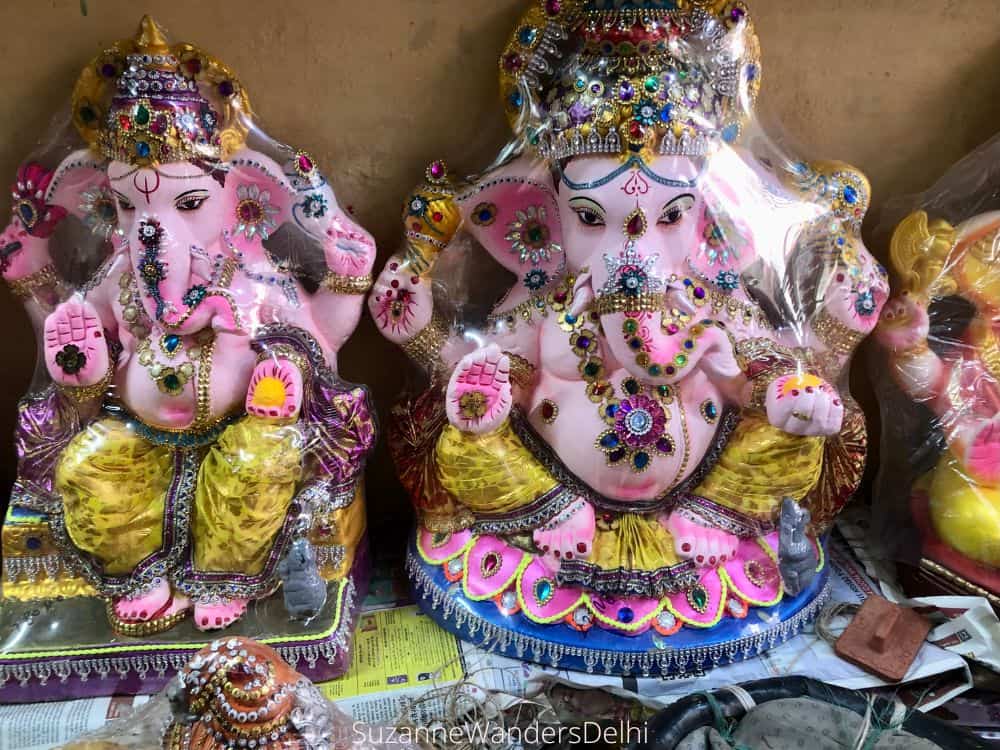
This is Kumhar Colony, where potters from Alwar, Rajasthan settled in 1970 and brought their unique form of pottery with them. You can buy beautiful pottery pieces at wholesale prices, see how they are made and meet the artisans.
Today the village has about 400 families, all of them involved in producing terra cotta pottery. It is a multi generation tradition, most potters learned the trade as children from their fathers. Many have won national awards and some have shown their work in Europe, Asia and North America.
Wholesalers and showroom owners get their designer and decorative items from Kumhar Colony, most of the pottery you see for sale in Delhi’s shops and markets has come from this village.
Meet the Artisans
Visitors are more than welcome to venture off the main road and into the lanes where you will see the entire process, from mounds of clay on the road to finished products ready for sale. Potters are also happy to share their knowledge. If you have an interest in pottery, let the potter know and he will be happy to demonstrate and answer questions.
Because of the intense Delhi heat, the kilns are fired up at night, which are kept on the roof-top terraces of each house. This has recently caught the attention of the National Green Tribunal after neighbours in the adjoining colony complained about the pollution.
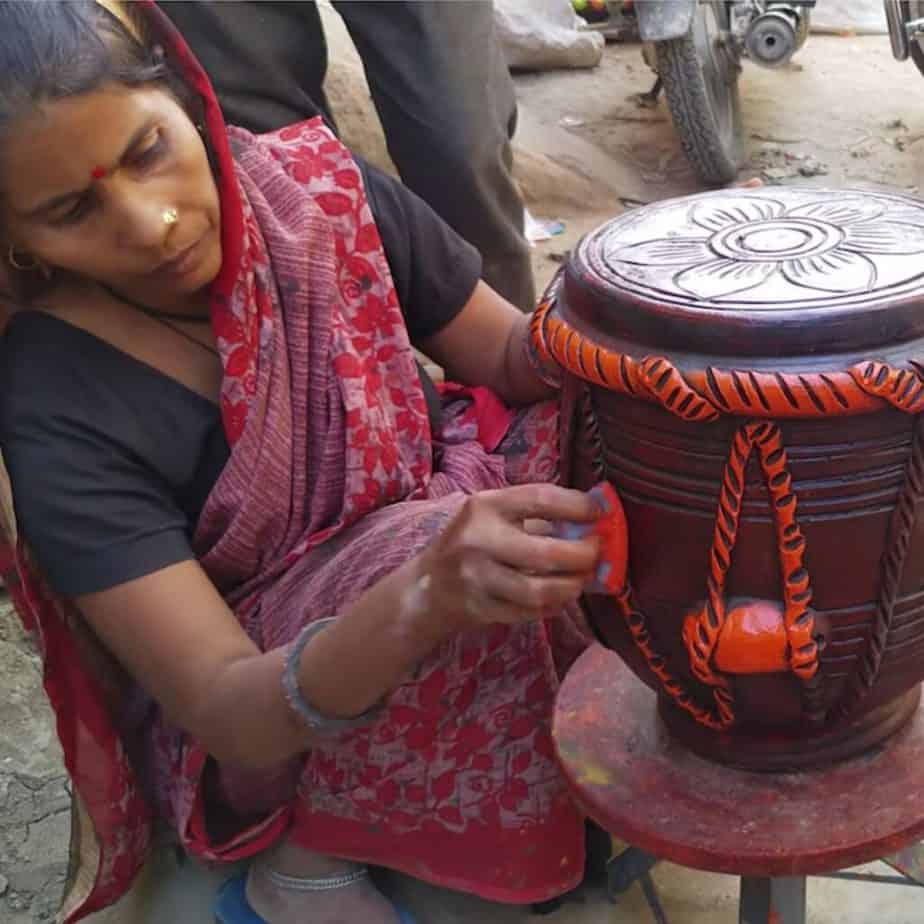
This is a hot topic in Delhi, which is always facing a pollution crisis. Potters burn wood and sawdust for the kilns with no chemicals and feel their colony is under attack unfairly. Gas or electric kilns are an expensive option the colony cannot afford without government support. This is one of the off the beaten path sites in Delhi you should see now, I’m not sure how much longer it will be around for.
- Hours & Cost: 9:00 am – 9:00 pm, daily (closed Monday); free
- Nearest metro station: Uttam Nagar East (Blue line), exit Gate 2
- What to see nearby: Sulabh International Museum of Toilets
- Where to eat: South Indian Cafe, Dosa Place
31. Begampur Mosque
This forgotten treasure of the Tughlaq era will astound you because of its immense size and most prominent feature, 64 domes. The mosque is one of seven built in the 14th century by Khan i Jahan Junan Shah, a prime minister to the emperor Feroze Shah Tughlaq.
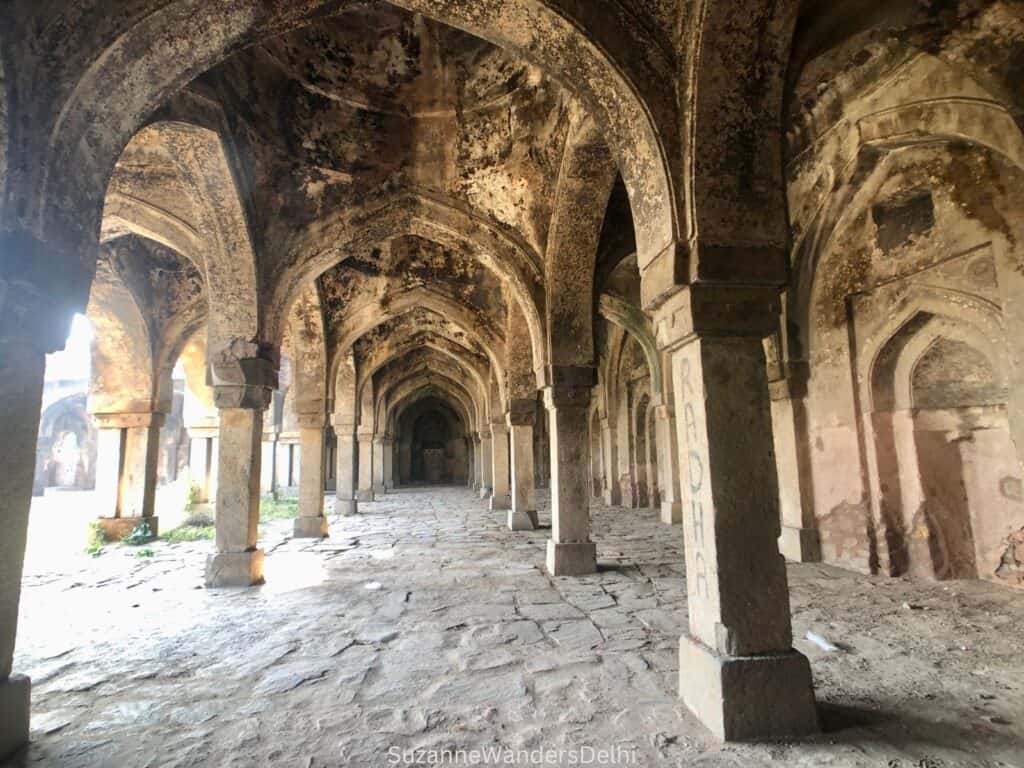
The most striking thing about Begampur Mosque is that a monument so large could be so neglected. At the time, it would have been the largest mosque in Delhi, only surpassed by the Jama Masjid two centuries later.
It served as an administrative centre, a place of worship and madrasa. Today it is used as a cricket pitch and regularly vandalized by locals who use the masonry in their own building projects.
It took a social media post from historian William Dalrymple to spark renewed interest by the Architectural Survey of India (the ASI) in the dilapidated condition of the Begampur Mosque. They have now committed to protecting and restoring the mosque over several years.
- Hours & Cost: 24/7 but go during the day; free
- Nearest metro station: Hauz Khas (Yellow or Magenta line), exit Gate 1
- What to see nearby: Shahpur Jat, Sri Aurobindo Ashram Delhi
- Where to eat: Bhawna Food Corner, Potbelly Rooftop Cafe
👍 Insider tip: For a small tip, the ASI guard at the mosque will be happy to show you around and provide access to the roof. You can get some impressive photos of the domes from the rooftop, but be cautious as parts of the roof are missing.
32. Indira Gandhi National Centre for the Arts (IGNCA)
Inaugurated in 1985, this arts centre has become one of Delhi’s premiere cultural venues. It is a hub and repository of Indian art and culture and regularly hosts seminars, dance performances, vocal recitals, film screenings and book discussions.
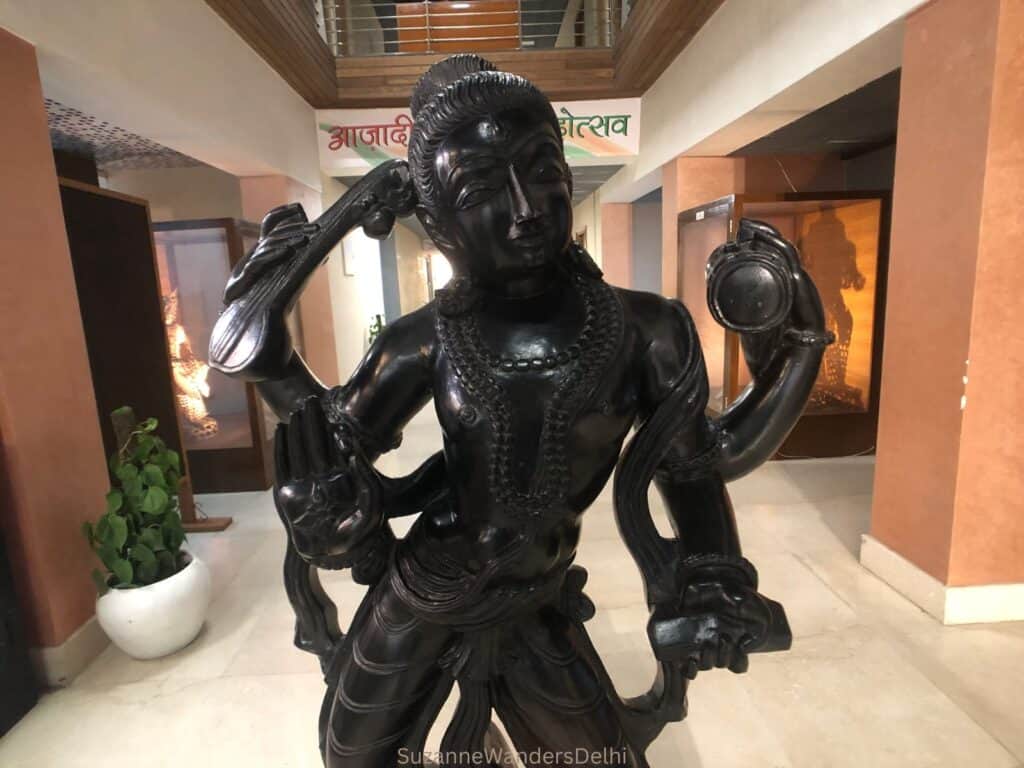
There is always something happening at the IGNCA; attending an event is a real cultural treat.
In keeping with the IGNCA mission to protect and preserve Indian culture, they have taken over the National Mission on Cultural Mapping. In 2022 they will map 5,000 villages and create a data base of artists and art forms from all over India.
The IGNCA also has an impressive collection of manuscripts and books in their archival section and offers short and long term post graduate courses in arts and culture.
An Arts Centre in a Hotel
To make way for the mammoth Central Vista development project (the complete redevelopment of Kartavya Path and its government buildings), the IGNCA has moved to a temporary home at the former Janpath Hotel.
The temporary location does not have the exhibition halls the old one had, but the IGNCA has displayed the art in the former hotel lobby and hallways. There is also a brand new auditorium, outdoor amphitheatre, library, souvenir shop, café and a rooftop venue for interactive events.
The new, state of the art facility at Jam Nagar House is scheduled to open in 2025.
- Hours & Cost: 9:00 am – 5:30 pm, Monday to Friday (closed Saturday and Sunday); free
- Nearest metro station: Janpath (Violet line), exit Gate 1
- What to see nearby: Connaught Place, India Gate, Rashtrapati Bhavan, Jantar Mantar
- Where to eat: Grappa or Shang Palace (both at Shangri-La Eros Hotel), Andhra Pradesh Bhavan Canteen
33. Sri Sri Parthasarathi Mandir (ISKCON Temple Delhi)
The home page of the ISKCON Temple Delhi website says “We at ISKCON are aficionados of life, culture, love, faith, Krishna, happiness, and science, which connect every soul worldwide” and a visit to the ISKCON Temple definitely exudes this culture.
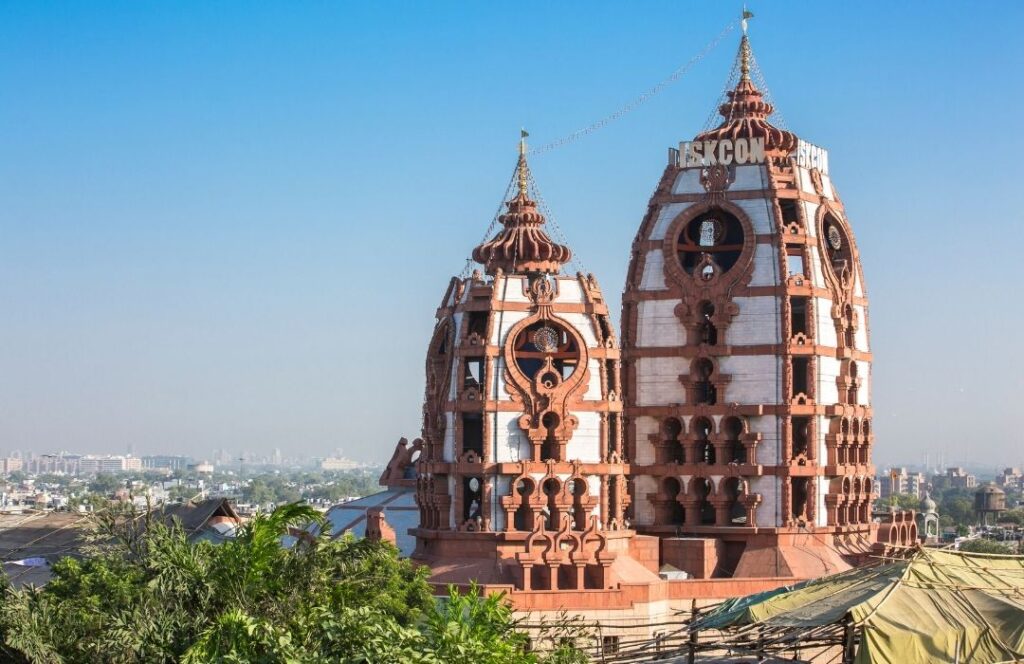
It is a happy, joyful place full of chanting, clapping and dancing. Attending an aarti here (ritual prayer ceremony) is an unforgettable experience.
The ISKCON Delhi centre is beautiful. There are gardens and fountains leading up to the sanctuary, which is full of carved and decorated deities. Paintings depicting scenes from the epic Indian poem the Mahabharata , on which Hindu beliefs are partially based, decorate the walls.
The founder of the ISKCON movement (International Society of Krishna Consciousness) is Srila Prabhupada and he was a remarkable man, way ahead of his time. He believed happiness is a science that could be studied and understood in order to obtain permanent contentment. This was in the 1960s, today that study is called positive psychology.
The Astounding Bhagavad Gita
ISKCON Temple Delhi is home to the Astounding Bhagavad Gita, an 800 kg book printed in Italy (there is an Italian version also), recognized as the largest principal sacred text ever printed.

ISKCON devotees worship Krishna as the highest form of God and follow the teachings in the Bhagavad Gita (part of the Mahabharata) in which Krishna instructs the hero Arjuna on how to lead a noble life. You will see copies of the Bhagavad Gita for sale at any ISKCON centre, usually in multiple languages.
Joining in an Aarti
The aarti is a frenzy of believers singing, chanting and offering flowers and sweets to the priests who then shower the crowd with rose petals and holy water. Some devotees dance, twirl and clap, caught up in a spiritual ecstasy. The mood is happy, welcoming and a bit mad as everyone surges forward toward the priests. Attending the evening aarti at ISKCON is one of my most memorable Delhi experiences!
There are different aartis throughout the day at ISKCON Temple Delhi: Darshan Aarti at 7:15 am, Guru Puja at 7:30 am, Raj Bhog Aarti at 12:30 pm, Usthapana Aarti at 4:15 pm, Sandhya (dusk) Aarti at 7:00 pm, and Sayana Aarti at 8:30 pm.
- Hours & Cost: 4:30 am – 1:00 pm & 4:15 pm – 9:00 pm, daily; free
- Nearest metro station: Nehru Place (Violet line), exit Gate 1
- What to see nearby: Bahai Lotus Temple, Amar Colony Furniture Market, Nehru Place Market
- Where to eat: Govinda’s (at ISKCON)
34. Mehrauli Archeological Park
What was once a scrubby, inhospitable forest is now a spectacular parkland with beautifully restored monuments. This should be high on your Delhi list.
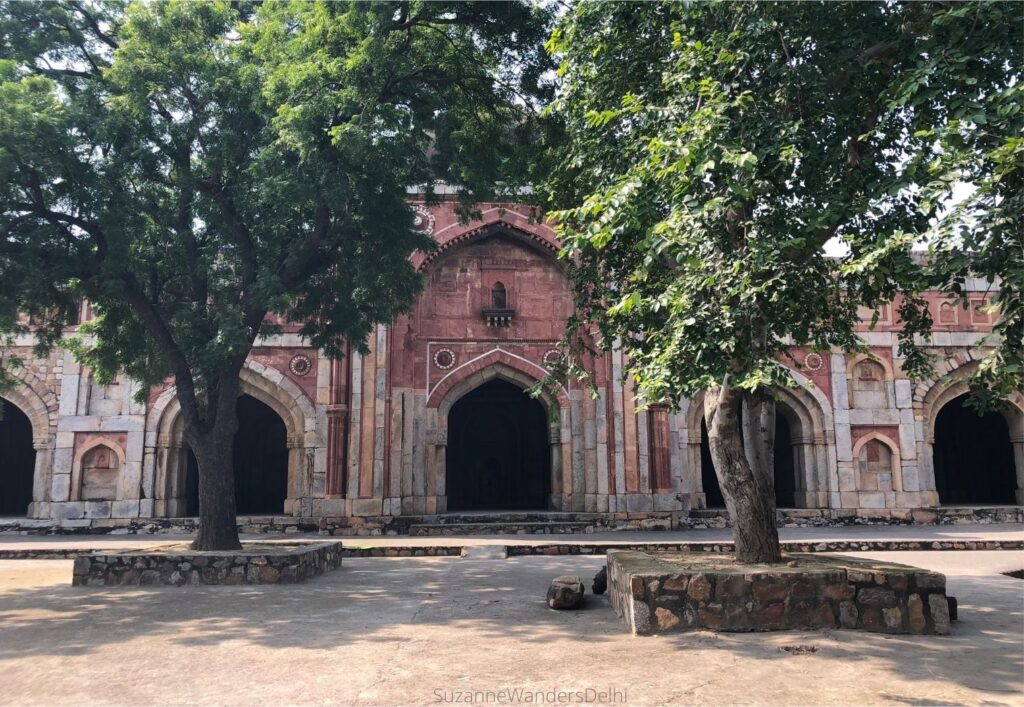
I used to visit here a lot when it was free and not organized, but the DDA did an amazing job of restoring the park and the monuments, and it’s well worth the INR 500 entry fee.
It’s become a beautiful forested parkland with spectacular monuments from the pre-Islamic to late Mughal periods. Monuments that were previously inaccessible to the public and are now open, like the 17th century tomb of Muhammad Quli Khan.

The most impressive monuments are the ancient stepwell, Rajon ki Baoli and Jamali Kamali mosque. The tombs of Balban and Jamali Kamali, as well as Chaumukha Darwaza (gate) are also in the park.
More Ruins in the Village
The park backs onto the urban village of Mehrauli and most of the foot paths end up there. The village of Mehrauli also has some fantastic free places to visit, like the incredible Jahaz Mahal (Ship Palace) and Zafar Mahal, the summer palace of the last Mughal ruler, Bahadur Shah Zafar.
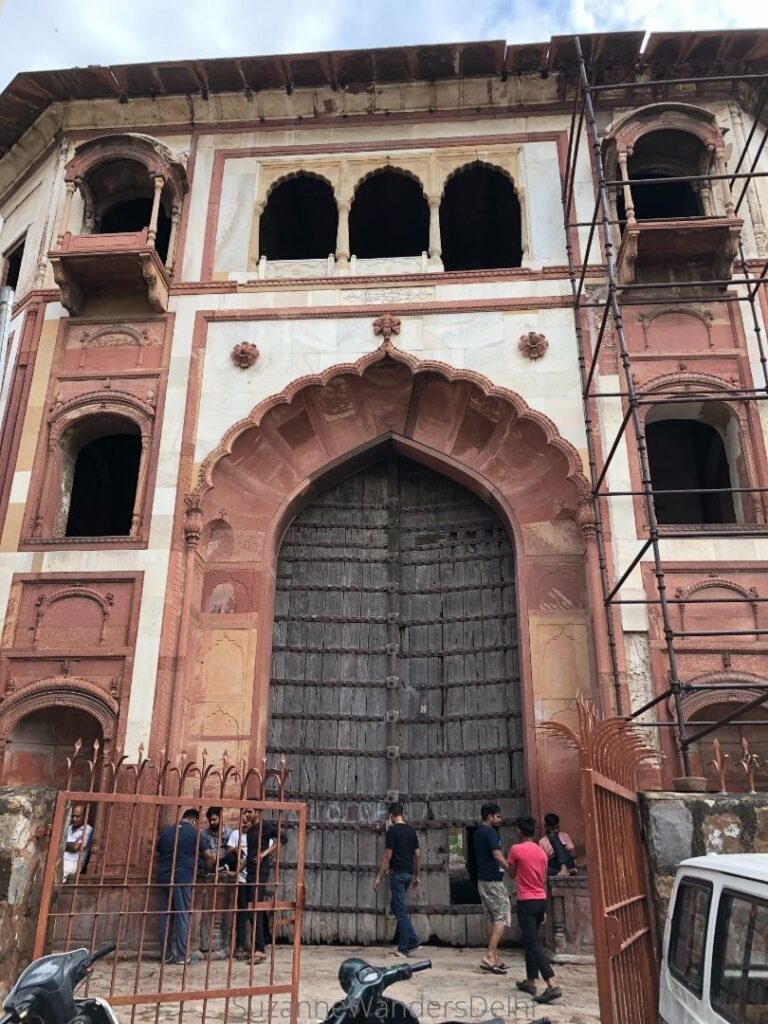
Jahaz Mahal is somewhat protected and has a guard, but Zafar Mahal is in a ruinous state, completely encroached upon by new construction and used as a drinking/card gambling spot. Judging from the architecture it must have been magnificent once.
- Hours & Cost: 7:00 am – 7:00 pm, daily; INR 500 for foreigners
- Nearest metro station: Qutab Minar (Yellow line)
- What to see nearby: urban village of Mehrauli, Qutub Minar (UNESCO)
- Where to eat: Cafe Stone (in the park)
35. Devi Prasad Sadan Dhobi Ghat
A dhobi ghat is an open air laundromat and Delhi has one, right in one of its most prominent neighbourhoods. Tucked away down a quiet back lane is where much of the laundry of local officials, families, businesses, hotels and hospitals is done.
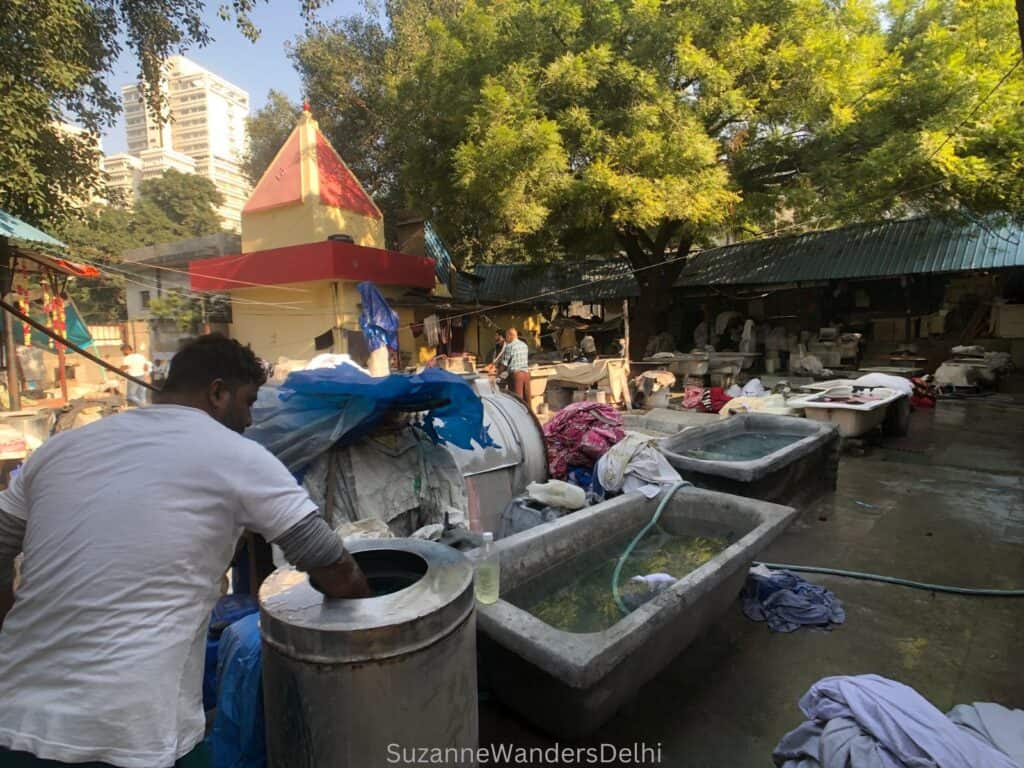
You will know you are at the right place when you see the street lined with sheets drying in the sun. Feel free to take a look inside the dhobi ghat – the dhobis (washer men) are some of the most cheerful and friendly people I have ever come across in Delhi.
From the wee hours of the morning until early afternoon the dhobis are stomping in huge sudsy buckets, scrubbing linens with brushes, beating laundry on cement slabs and hand cranking spinning machines. After the laundry is strung up to dry – everywhere!
The women take over once it is dry, ironing and folding everything neatly for it be bundled up and delivered back the same day.
Devi Prasad Sadan Dhobi Ghat is a community of close to 100 people, many of them third generation dhobis. Some were relocated here after other dhobi ghats were shut down by the government. They live in small apartments provided by the municipal government across the boundary wall, in an area considered to be prime real estate.
The dhobis start very early in the morning, picking up laundry from across the city. Laundry is a family business, with the wives doing the ironing and children helping out, though most children do not want to continue the tradition.
- Hours & Cost: 5:00 am – 2:00 pm, daily; free
- Nearest metro station: Barakhamba Road (Blue line), exit Gate 4
- What to see nearby: Agrasen ki Baoli, Jantar Mantar, Janpath Market
- Where to eat: The Tin Whistle (at the British Council – you will need to show ID), Saravana Bhavan
How to Get Around to the Best Off the Beaten Path Sites in Delhi
I always recommend taking the Delhi metro. It’s an excellent system: clean, efficient, inexpensive and the network is massive. It’s extremely easy to use and the best way to get to off the beaten path sites in Delhi. See my step by step guide on how to use the Delhi metro.
Uber and Ola are widely used in Delhi, but you will need data to use them. You can also arrange for a driver through your guest house or hotel for a day or half day.
FAQ for 35 Best off the Beaten Path Sites in Delhi
Yes, they are safe during the day. Avoid off the beaten path sites after dark unless you are with a group.
I think the best are Mehrauli Archaeological Park, Hazrat Nizamuddin Dargah, Feroz Shah Kotla Fort and National Crafts Museum & Hastkala Academy.
The Wrap-up on 35 Best off the Beaten Path Sites in Delhi
Delhi is an eclectic city, where the unexpected becomes the expected. It’s a city trapped in its past, but trying to surge ahead into a modern metropolis. I urge you to explore these 35 best off the beaten path sites in Delhi and discover some of your own too. In this city, you really don’t know what marvel or unbelievable thing you will see around the next corner.
Don’t forget travel insurance! It’s always a good idea to carry travel insurance just in case something goes wrong. I really like and use SafetyWing
